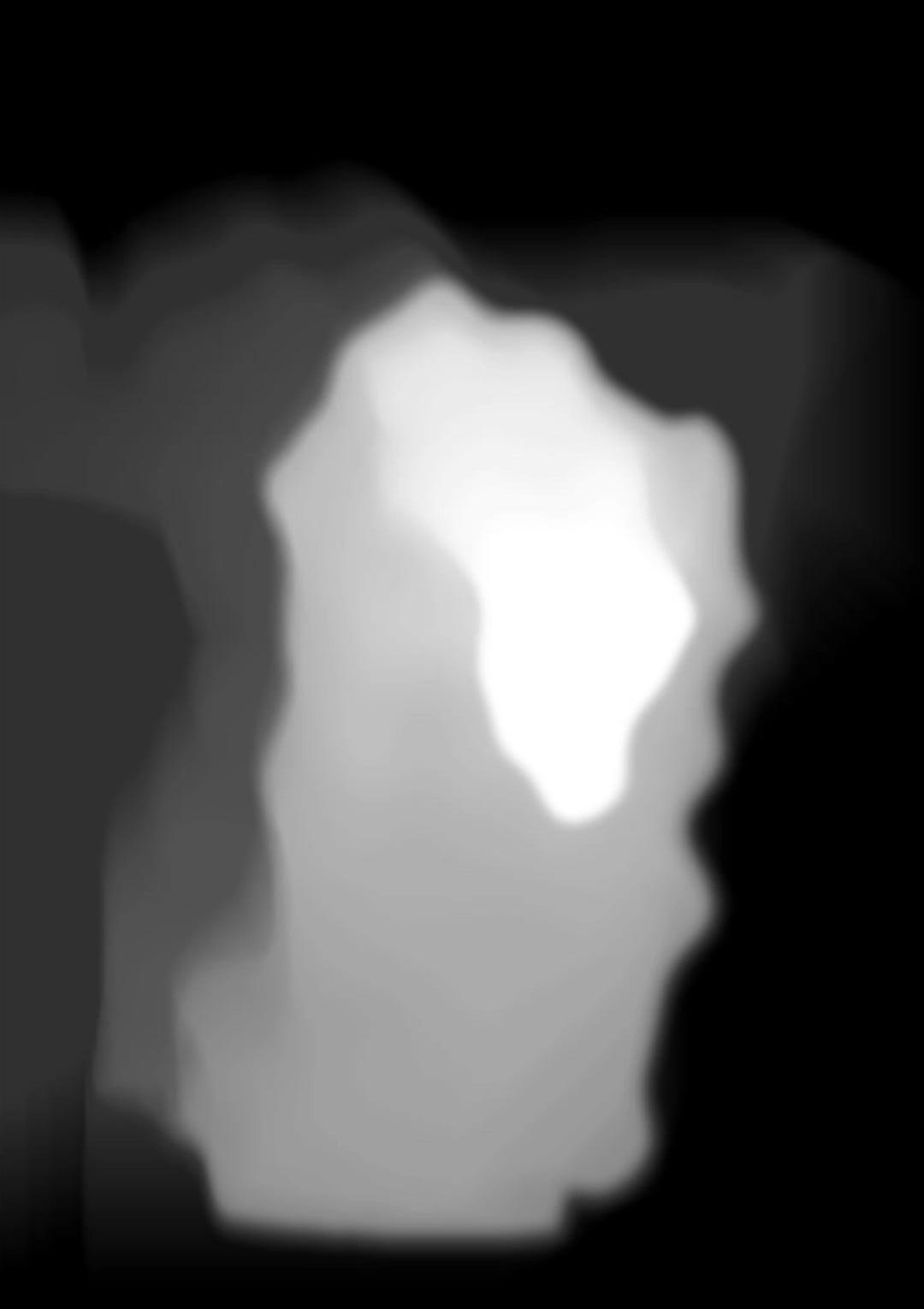
Portfolio + CV Saxa Fractionis MArch Y4 Ocular Envelopes MArch Y5 The Power of Insourcing Pilbrow&Partners 458 Oxford Street Pilbrow&Partners PlusX.Space Pilbrow&Partners Borgo Miranda Freelance | Gruner&Friends CHAM Freelance | Gruner&Friends Evaluation.toolkit Freelance | Gruner&Friends Ennco Render Freelance | Ennco Thesis MArch Y5 04 10 16 22 26 28 30 32 34 35 2023
Wojciech Karnowka
Architectural Assistant
It is with great enthusiasm to express my keen interest in working as an Architectural Assistant at Renzo Piano Building Workshop.
RE: ARCHITECTURAL ASSISTANT - APPLICATION
wojtek.karnowka@gmail.com
Part I Architectural
Assistant
7375 795834 wojtek.karnowka@gmail.com CONTACT
14 June, 2018
Ms. Beth Webber
To Whom It May Concern,
Allies and Morrison LLP
85 Southwark Street London SE1 0HX
Upon completing the second year of my degree, I took up the challenge of a simultane ous architectural assistant position at Pilbrow & Partners, and final year thesis development. My goal was to immerse myself in challenges faced in both academic and professional settings, using the time effectively to eventually find myself a big ahead.
It is with great enthusiasm to express my keen interest in working as an Architectural Assistant at AL_A, a practice that attracts me with an extensive portfolio of work that brings together invention, innovation, and research - embedded in architecture at a variety of scales with incredible attention to the detail.
Dear Ms. Webber,
My previous experience includes two roles at practices of different profile and size. At Wilkinson Eyre Architects I had a chance to work on projects at a variety of scales and stages, implementing a range of digital techniques into the traditional workflows. Those included: complex contexts analysis, LIDAR – topography and massing mesh generation, automation reports on heights, areas, among others. My major projects included Dyson Malmesbury Collaboration Space - exciting flexible space extending functionality to Dyson former headquarters, as well as facade design for a major bank headquarters in London
With this letter, I wish to express my interest in working with Allies and Morrison as part of the summer placement. I learned of the opportunity through the Stephen rence Charitable Trust.
Professionally, I was involved in a wide range of projects, supporting the team brow & Partners in the integration of advanced technologies into the office through the development of custom tools and automated workflows. Beyond 3D modeling drafting, my responsibilities also included the development of solutions towards planning requirements such as Average Daylight Analysis (ADF), Vertical Sky nent (VSC), Overshadowing, and others. During the time spent at Pilbrow & Partners I was often involved in collective work across various departments, from Visualisation Artis to Makers and Administrative Staff.
I am a computational designer specialising in architectural and urban design. My experience encompasses leading and contributing to projects of various scales through the development of digital analysis, design evaluation, and generative tools that seamlessly integrate technology into architectural and design workflows.
Currently, I am a second-year student of Architecture (RIBA Part I) at University of ster. This year I also had a great opportunity to be studying at prestigious Royal Melbourne Institute of Technology (RMIT) in Australia.
I have worked as a technican assistant in Fabrication Labolatory at the University Westminster for six months, where I was involved in advanced fabrication processes ing skills in advanced laser cutting, 3d printing, commercial printing and robotic arm tions - working together with experts in the field. Moreover I took part in a 2-months house catalog project for Holf Hause (Germany) where I was responsible for 3D modeling. My CAD drawings skills have been significantly developed this year when taking Architectur al Technology module at Royal Melbourne Institute of Technology.
I have also worked at Pilbrow & Partners where I was supporting the computational team in the integration of custom tools and automated workflows in development of solutions towards planning requirements such as environmental ADF, VSC, LVMF, overshadowing, and others. My key project included the Francis Crick Institute, where I was developing an evolutionary algorithm in order to optimise the institute’s internal spatial hierarchy.
Renzo Piano Building Workshop attracts me with a portfolio of works that bring together invention, innovation, and research - all embedded in architecture at ferent scales with incredible attention to the detail. I respect the practice of continuous commitment to contextual sensitivity, in search of harmony and balance, working projects across the globe.
I hold a First Class MArch Architecture Degree from the Bartlett School of Architecture, where I pursued my interest in design computation. Prior to that, I studied at the University of Westminster and the Royal Melbourne Institute of Technology (RMIT).
Currently, I am focusing on conceptual design and architectural representation exploring digital technologies and advanced digital tools through multiple means of representation which are illustrated in my portfolio. I believe that I am a knowledgeable and communicative individual with strong proficiency in software I am familiar with, and intuition in unknown interfaces.
I believe that my skill set, passionate curiosity would allow me to fit well in the
I am passionate about analysis, automation of repetitive tasks, and generation at all scales. I believe that the development of computational tools can fundamentally change the way we understand and conduct a design of the masterplans and buildings. Prospectively, at AL_A I would like to develop projects and research focused on complex contexts, advanced geometries, the performance of buildings, investigating opportunities to increase the speed at which designers can be iterated and speed at which decisions can be made, through conceptual thinking, textual and visual coding.
John Walked Memorial Prize for the Best Final Year Design in BA (Hons) Architec ture, Robert Mitchel Society Scholarship, among other distinctions I was lucky awarded, are to demonstrate that I am a highly motivated and open to opportunities and challenges, at both academic and professional level.
I heard about Allies and Morrison office as early as 2016 when first plans of polis have been announced. By living for sixteen months in Plaistow, Newham Borough I believe, I did understand the area as well as its hidden potential. What is more, I visited HereEast - Olympics press building, intended for deconstruction that eventually been converted into UCL creative design space which inspired me to search for opportuni ties in this particular neighborhood. I am excited to apply for a summer placement potentially allow me to contribute to similar, yet much more comprehensive venue.
I am currently based in London, however, I am willing to immediately move to Paris or New York when the opportunity appears.
I am looking forward to the conversation about potential opportunities, I can be contacted via e-mail, or telephone number: + 44 7375 795834.
My fascination with computational methods has propelled me to engage in diverse projects spanning Academic Research, Design and Manufacturing, and Software and Tools Development. These ventures have allowed me to collaborate with exceptional individuals and pioneering organisations. As I seek new opportunities, I am drawn to organisations that are committed to excellence while nurturing a culture of continuous learning, curiosity, and initiative.
In case there would be an interest in having the conversation about potential opportuni ties, I can be contacted via e-mail, or telephone number: +44 07496972310
I would very much like to speak with you about the potential opportunity of joining at Allies and Morrison. I might be reached at 0749-697-2310, or e-mail address: wojtek.karnowka@gmail.com
Kind regards,
Yours sincerely, Wojciech
Wojciech Karnowka
Kind regards,
Karnowka
Wojciech Karnowka
Wojciech
Karnowka
Note: selected content was initally created as animated films. Scan code or click to watch the animated videos and listen to voice narration.

About
Wojciech Karnowka London,
Building Workshop
Team
2310
Dear Hiring Manager,
RE: ARCHITECTURAL ASSISTANT - APPLICATION
interest
Wojciech
Karnowka
https://issuu.com/wojtekkarnowka/docs/wojciechkarnowka_portfolio2020 PORTFOLIO
Wojciech Karnowka
Computational Design & Research
EDUCATION
20212023
2018
20162019
Master of Architecture (RIBA Part II)
Bartlett School of Architecture (UCL), London, UK dr Marjan Colletti, Javier Ruiz | Distinction
Bachelor of Architecture (exchange)
Royal Melbourne Institute of Technology (RMIT), AU
André Bonnice, Anna Jankovic | Distinction
Bachelor of Architecture (RIBA Part II)
University of Westminster, London, UK
dr Costance Lau, dr Fiona Zisch | Distinction
EXPERIENCE
2020 sep2023 feb
Computational Designer (R&D)
Pilbrow&Partners, London, UK
Led integration of technology to design operations, improved efficiency via automated workflows for early planning stages (VSC, APSH, Visibility and others). Directed experimental methodologies and computational strategies for developing, assesing and comparing indoor office spaces. Explored visualisation methods, dashboards, maps and graphs to showcase spatial potentials, developed in-house tools, plugins and scripts.
2022 sep2023 feb
Postgraduate Teaching Assistant (BSc)
Bartlett School of Architecture (UCL), London, UK
Led workshops and teaching sessions to BArch course students. Responsibilies involved review of design work and participation in design reviews with programme leaders.
2021 janongoing
Computational Designer (R&D)
Freelance, London, UK
Developed multiple projects in collaboration with international clients (i.e., UCL, GRUNER&FRIENDS, STUDIO DERA, CLOVER STUDIO, ENNCO, and others in multiple disciplines) developing plugins, in-house workflows and scripts. The work included collaboration with software-engineers, coordination and documentation of projects at various scales.
2019 sep2020 sep
Architectural Assistant (ARB Part I)
Wilkinson Eyre Architects, London, UK
Worked on various-scale projects at different stages. A key project was the Dyson Malmesbury Collaboration Space, where I developed the concept of a flexible collaboration space and gained client approval. Worked on RIBA Stage II-III of a major bank headquarters in Canary Wharf, London, where I focussed on the iterative development of a facade strategy. Other projects involved the development of design concepts, 3D modelling, 2D drafting and the production of presentations, schedules and reports as to internal and external building elements.
SKILLS DESIGN
+44 737579 5834
wkarnowka@gmail.com
https://www.linkedin.com/in/wojciechkarnowka
Rhino / Grasshopper / Houdini / Microstation
DEVELOPMENT, ANALYSIS
Python / VEX / Grasshopper / C# / QGIS
VISUALISATION
Ai, Ps, Id, Pr / Redshift / V-ray / Keyshot / Enscape
RECOGNITION / PUBLICATION
2023
10th Venice Architecture Biennale
CityX Venice Virtual Pavilion
Saxa Fractionis shown at Virtual Pavilion Venice
2022 20222023 2019
RIBA Wren Insurance Association Scholarship
RIBA, UK
Shortlisted for the final stage of RIBA student excellence scholarship
OPEN Catalogue
Bartlett School of Architecture, London, UK Work published in final-year catalogue, for both 2022, and 2023.
John Walked Memorial Prize University of Westminster, UK Best Final Year Design in BArch
2018
Distant Horizons Award
University of Westminster, UK Travel Award and Scholarship, Melbourne, AU
2018 Student Excellence Award
University of Westminster, UK
Outstanding Academic Performance in the BArch, II year.
20162019 Robert Mitchell Society Scholarship Robert Mitchell Society, BArch, I - III year. High Achieving Student Scholarship Award
REFERENCES
Prof. Marjan Colletti
Professor of Architecture and Post Digital Practice, The Bartlett School of Architecture, UCL m.colletti@ucl.ac.uk
2018 sep2019 jul
Computational Designer (R&D)
Pilbrow&Partners, London, UK
Worked on a number of projects in their early stages, where I investigated and implemented iterative and analytical approaches through digital technology, data analysis and advanced modelling within office design processes. Key projects included the Francis Crick Institute - Future Work Place, 54 Bishops Gate (planning granted) and Theatre Study (findings will be published in book “Sense of Theatre” in 2021, by Richard Pilbrow).
I was also involved in 3D modelling, 2D drafting and diagraming.
Dr. Fiona Zisch
Programme Director, Lecturer, Researcher and Architect, The Bartlett School of Architecture, UCL fiona.zisch@ucl.ac.uk
Ralf Lindemann
Senior Associate Partner, Head of Design Technology
Pilbrow&Partners (2014-2022)
r.lindemann@outlook.com
SAXA FRACTIONIS
London, United Kingdom
Institution:
Advisors:
Bartlett School of Architecture
MArch, June 2022, Year I
dr Marjan Colletti, Javier Ruiz
The project in an investigation focused on analogies between the rapidly evolving digital world wide web, with its current ills and opportunities, and the City of London, a highly centralised, dense enclave failing to adapt to the new dynamic live-work environment.


The proposal attempts to challenge the current paradigm of how buildings are designed, constructed and managed, as during the years necessary to deliver projects market fluctuates, resulting in misalignment of the market and character of the local context. I argue that a more evolutionary model, allowing the building to update and recalculate constantly, would enable for more contextually relevant approach to construction.
The key explorations included algorithmic analysis of the context, minimsation of impact on existing developments, and a search for an ideal landscape - a new type of public space derived from conjunction of environmental and social factors. The proposal also investigates new models of ownership, and the idea of a building conceived, funded, constructed and managed through the Decentralised Autonomous Organisation (DAO).
Initial Morphology Explorations


The initial studies explore new distribution models, focusing on the Eastern Cluster of the City of Lonodon. The initial analysis focuses on 52 Lime Street, however the system can be applied to any existing building.

academic work
Project QR Code
Cluster 2
Cluster 1
Cluster 0
Analysis and Reconfiguration of Existing Monocultural Programmes Through Expansion, Contraction, Inflation Creating New Exubberant Forms


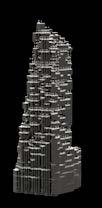
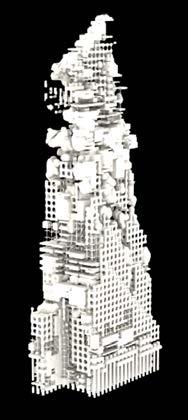


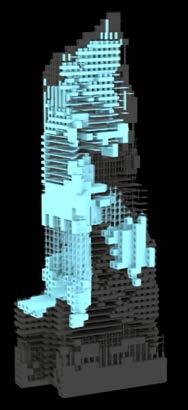
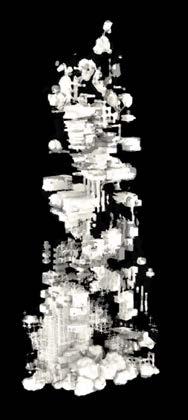
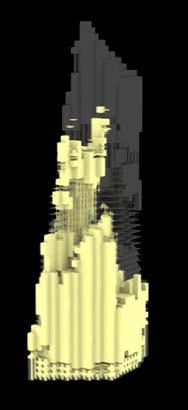
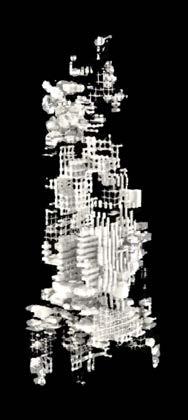

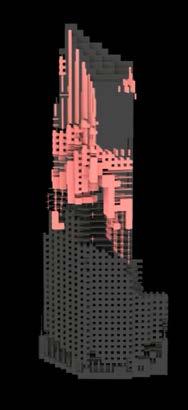



Iteration 0 Gradient 12 Commercial Volume Iteration 42 Gradient 34 Residential Ownership Volume Iteration 103 Gradient 61 Residential Rent Volume Iteration 179 Gradient 98 Hotel Volume
Proposed Speculative Programmes
Gradual Negotiations
The model is fed with contextual data and constraints. Direct Sun Irradiance is mapped onto the facade, after which an unsupervised machine learning algorithm searches for patterns and determines the distribution of previously developed volumetric models.
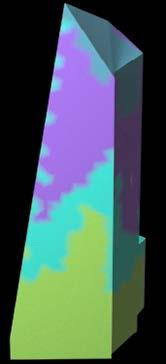
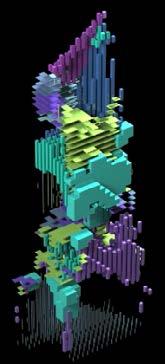
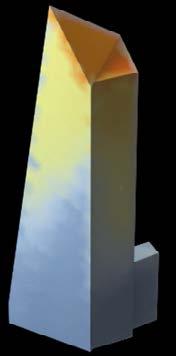
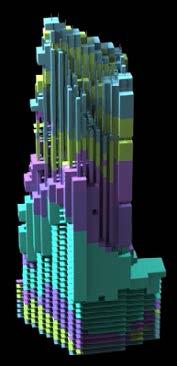
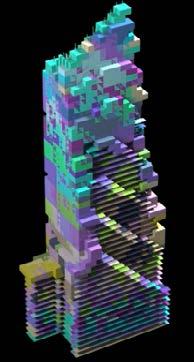
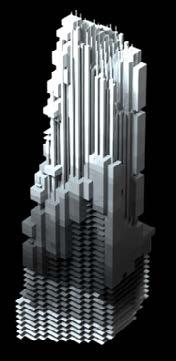
Programme
The programmes are established temporarily, and as gradients shift, they possess the ability to adjust and update the building volumes in response to social and architectural parameters.
Massing
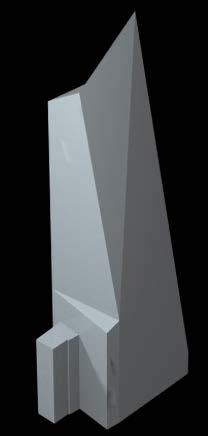
Visibility
K-means Clustering Typology Distribution
Sun Irradiance
< 150 KwH Low > 600 KwH High K-means Clustering Cluster 0 Cluster 1 Cluster 2 Cluster 3 Cluster 0 Cluster 1 Cluster 2 Cluster 3
Far Right Top: View From Inside the Apartment in the Aggregation Far Right Bottom: External View of the Structure and Landscape Interface
Typology Distribution
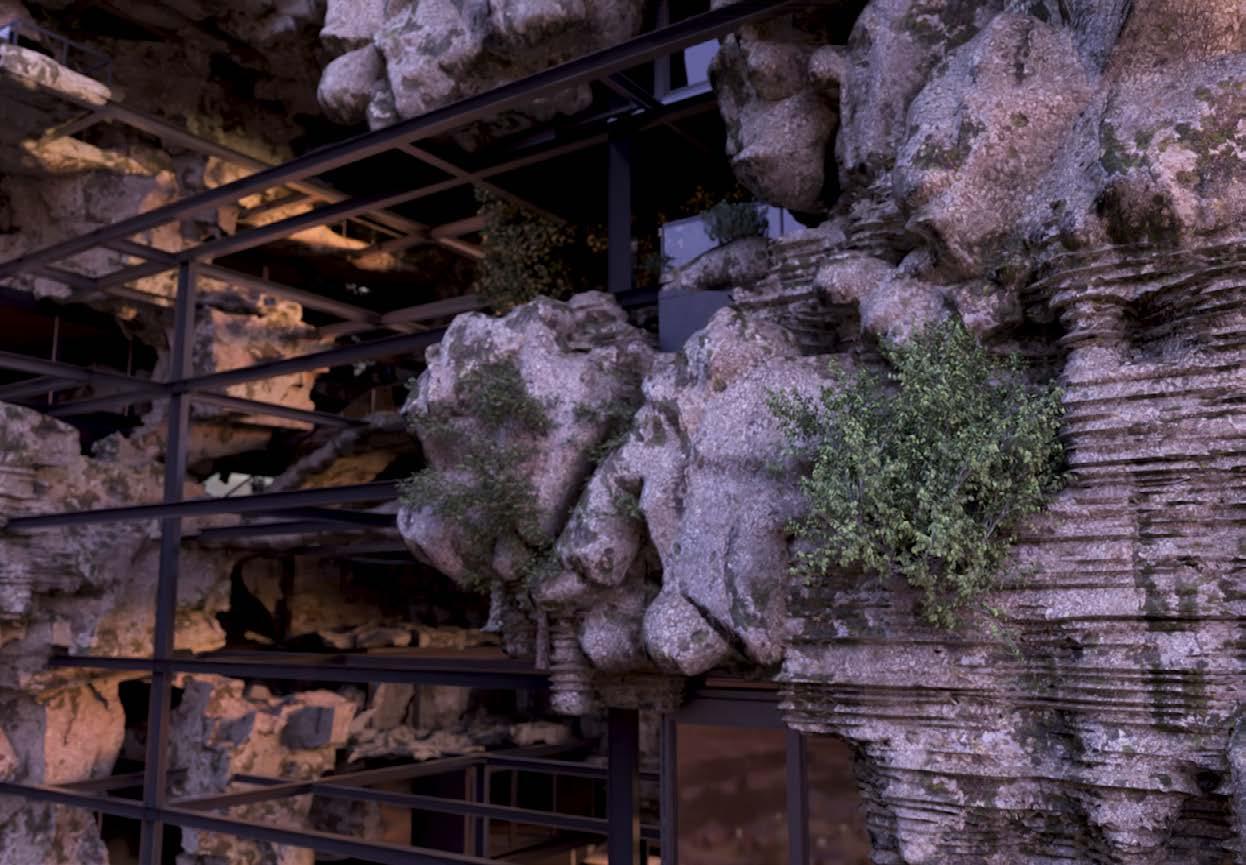
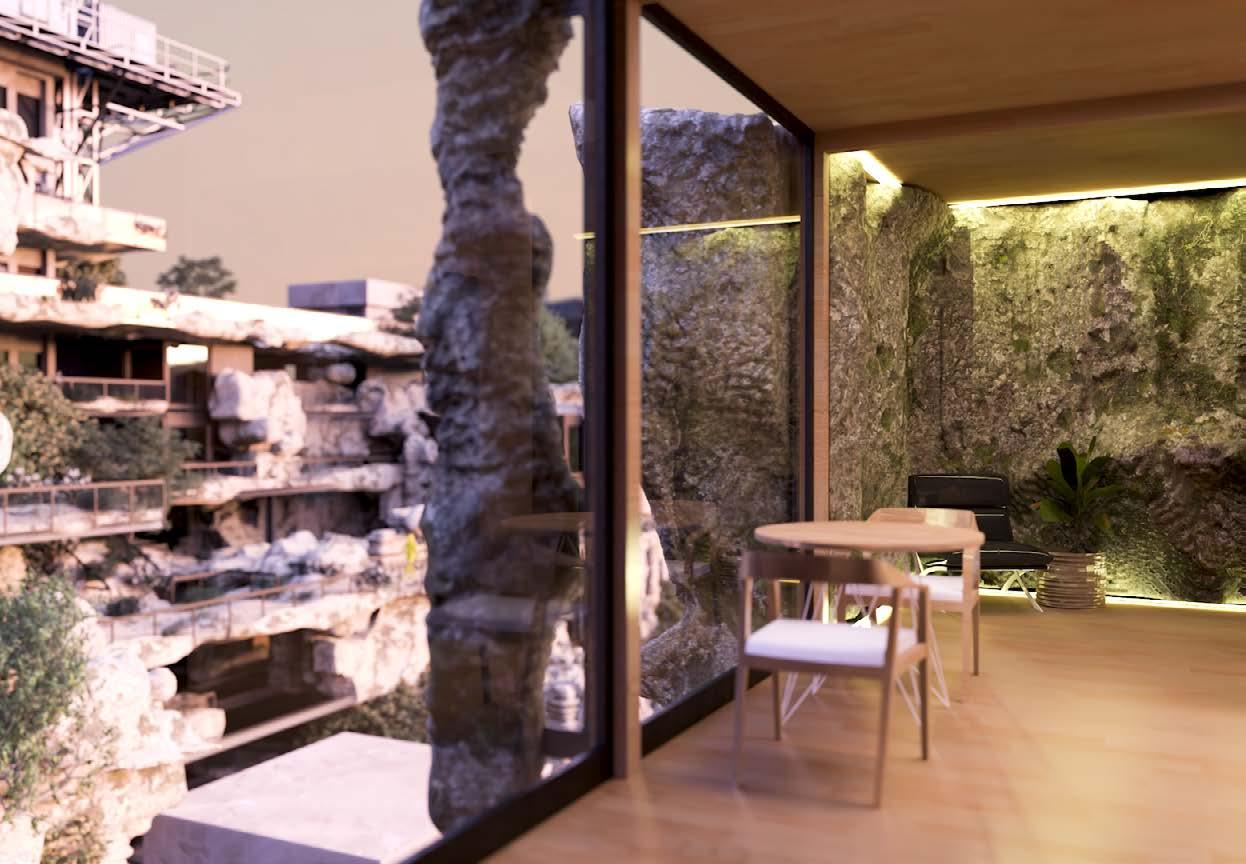
Developed Methodology is Transfered to a New Site: 40 Leadenhall Street.

Perspective View
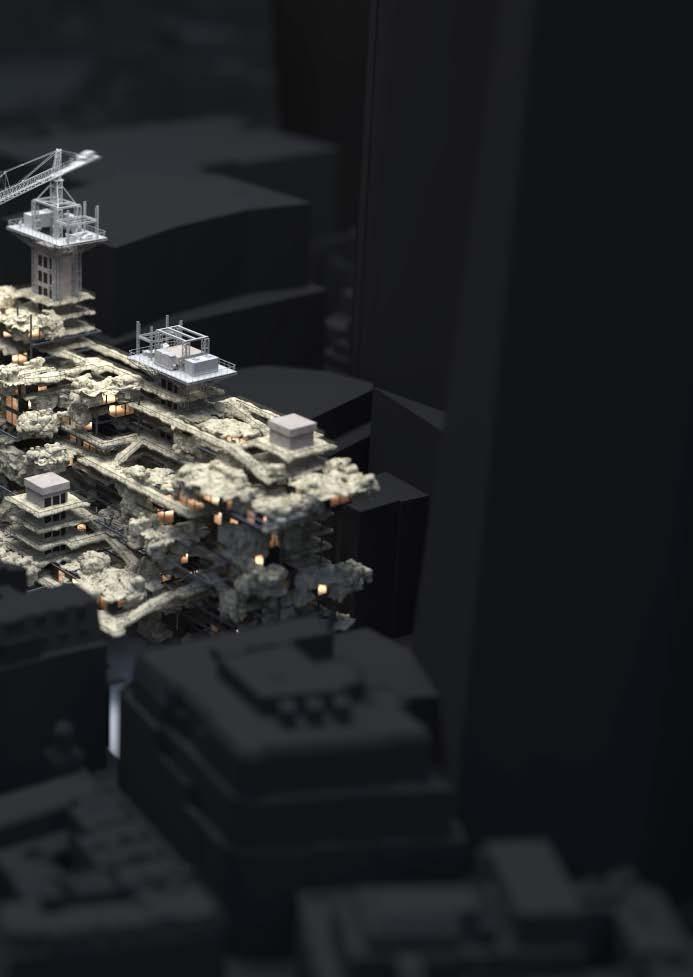
OCULAR ENVELOPES
London, United Kingdom
Institution:
Advisors:
Bartlett School of Architecture
MArch, June 2023, Year II
dr Marjan Colletti, Javier Ruiz
The project navigates through the domains of the body, consciousness, and vision, scrutinising multi-dimensional technological and spatial protocols within the framework of virtual and physical reality. The visual perception data stream facilitates the initial identification of transient spatial perception gaps, and then utilises the experiences of multiple users to form a collective consensus on ideal spaces, objects, and things. This process involves negotiating the known and unknown to create novel, vibrant spatial constructs.
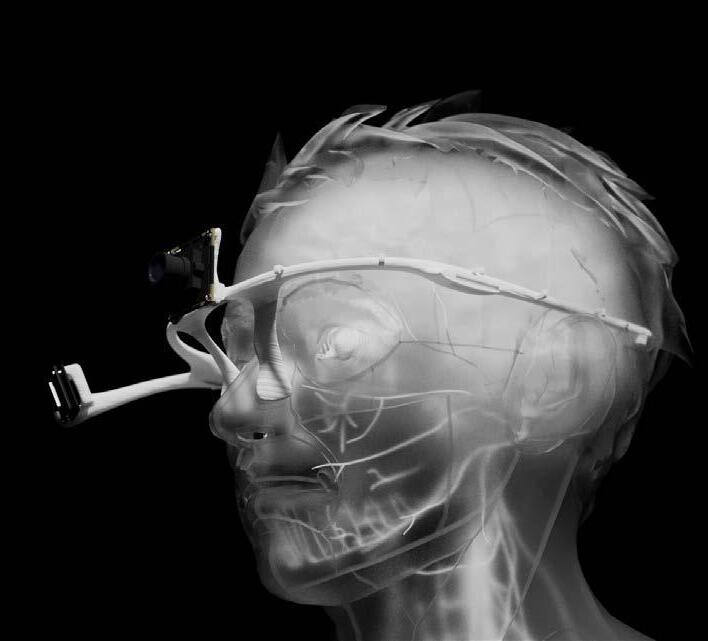
In these new environments, users don’t actively endeavor to create buildings or objects. Instead, by observing, they articulate features and characteristics that are then accentuated by a sequence of algorithms.

In the first semester, the project concentrated on visionthe primary sense. As it traverses space, forms evolve, and when the visual focus is lost, the environment reconfigures itself. These forms consist of instances of familiar elements like columns, slabs, and geometries that resemble facades or structural components. This results in extraordinary assemblies that materialise and dematerialise in the blink of an eye.
During the second semester, I developed a new spacesurvey methodology that relies on the metadata derived from the event of visual perception. Ordinary objects and spaces are first surveyed in non-virtual reality before being expanded into VR. The data from collective consensus then cultivates “average” atriums, pavilions, and streets, overtaking the known city.
Project QR Code

academic work
Eyetracking Headset Enabiling Eyetracking And Corelation with External World
Ocular Envelopes Framework Transforming Public Spaces of Lonodon, Perspective View

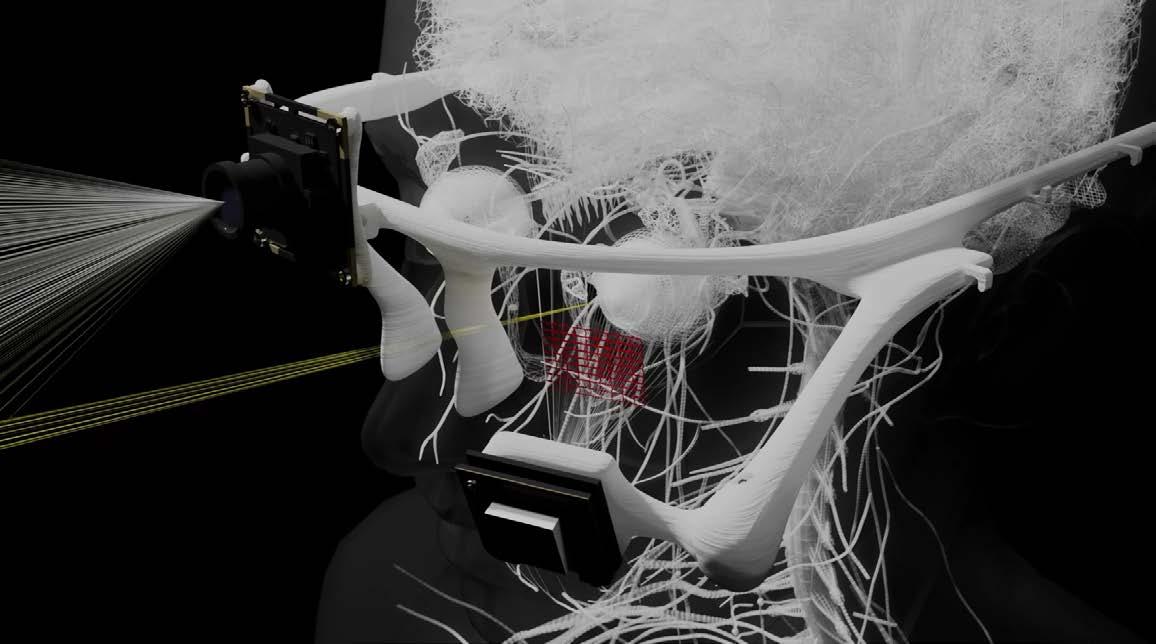
Eyetracking Picture Planes Visualisation
Oculargrammetry
The process of developing three-dimensional models with visual perception data and metadata I define as Oculargrammetry. The initial tests are performed as my work station – as eye traverses the space, recording the path and sequence accuracies and inaccuracies of the interaction as imprinted in the generated geometry.


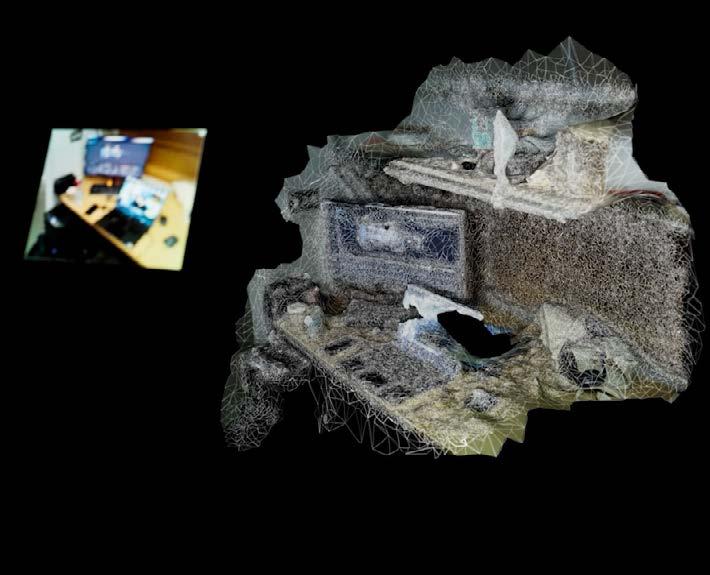
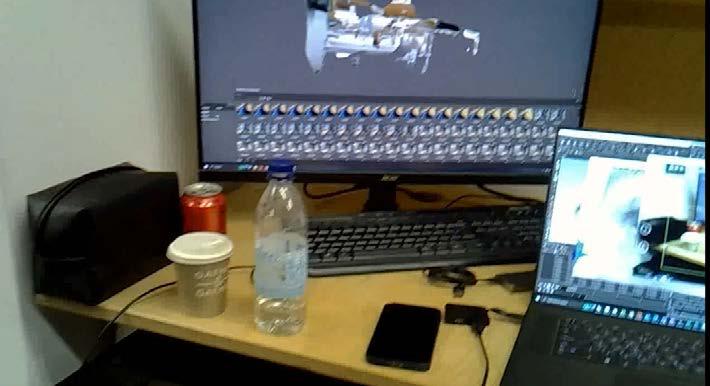
Edges, corners, vivid colours and high contrast areas –are what draw gaze and fixations. As a result, I define, the “perceptual void model” geometrical formations excluding areas of low gaze frequencies – to identify these geometries that seem to captivate visual perceptions.
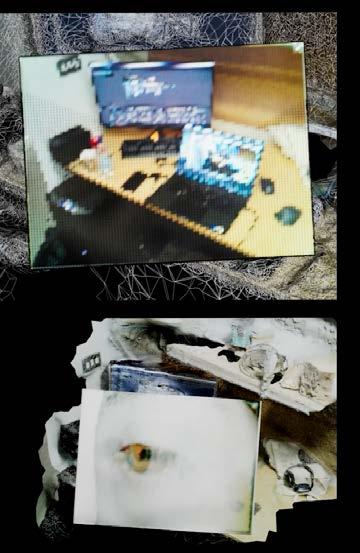 Visiongrammetry Development Process
World Camera View
Visiongrammetry Development Process
Eye Camera View
Perceptual Void Model, Perspective
Visiongrammetry Development Process
World Camera View
Visiongrammetry Development Process
Eye Camera View
Perceptual Void Model, Perspective
The system of “perceptual void detection”, can be transferred to survey large staircases, or tube stations. However the developed methodology limits the research to spaces that can physically be visited. To reach the final conclusions, I re-program the method into virtuality so that the 3D ocular survey can now be performed at new scale, with existing, or create 3D spaces.

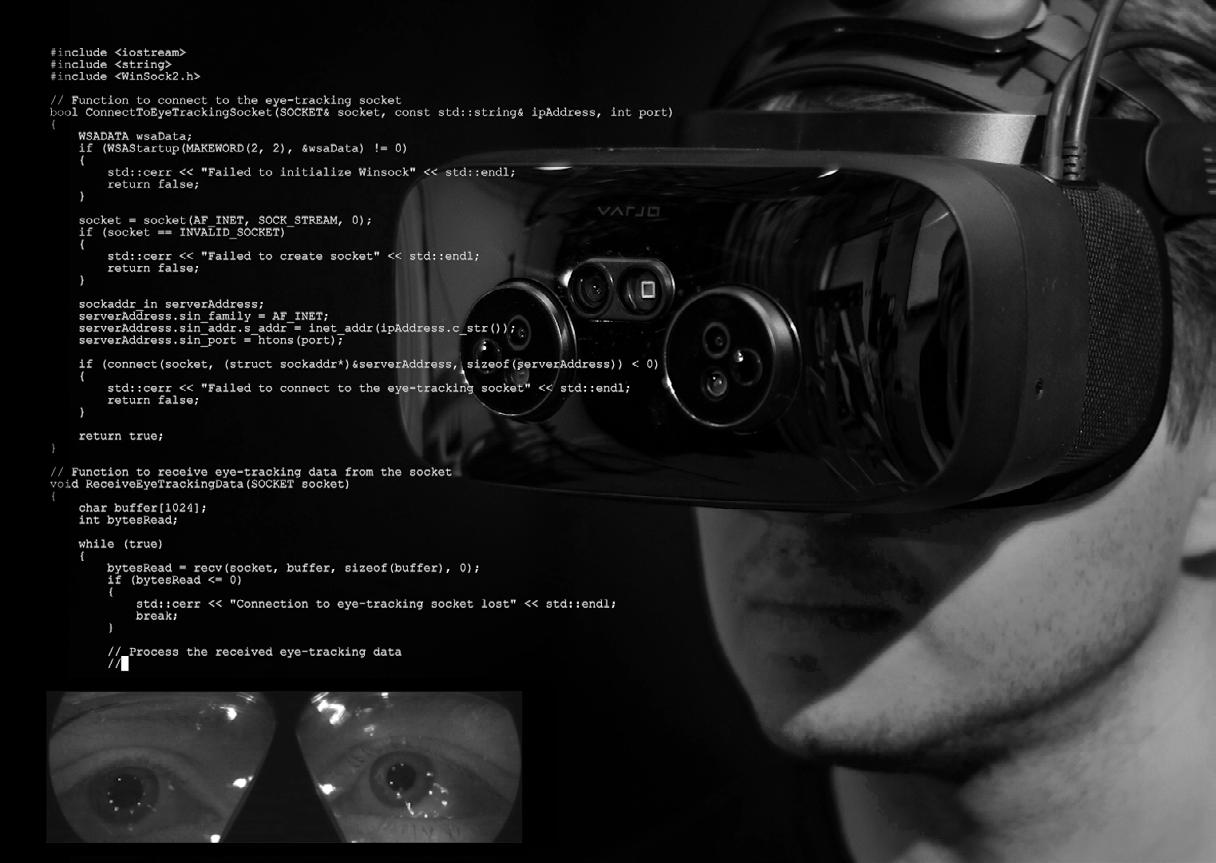
The new mode of design, assumes collection of multiple experiences of multiple users as they visually experience spaces the underlying clustering algorithms, extract the key areas of focus, to achieve the visual perception areas of consensus – the algorithm then re-generates the spaces – adding and subtracting volumes, exaggerating colors, and materials. The emergent forms, are directly driven, by users collective experience. The new exuberant forms, are juxtaposed, against, the existing repetitive, “hierarchy-less” spaces, are now augmented by these exuberant forms.
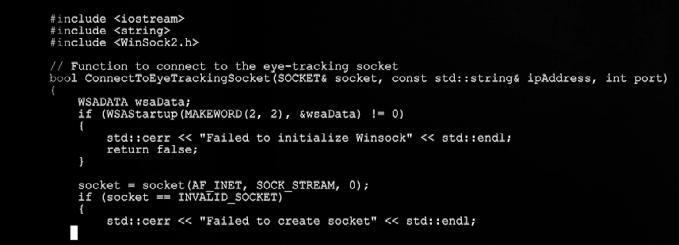
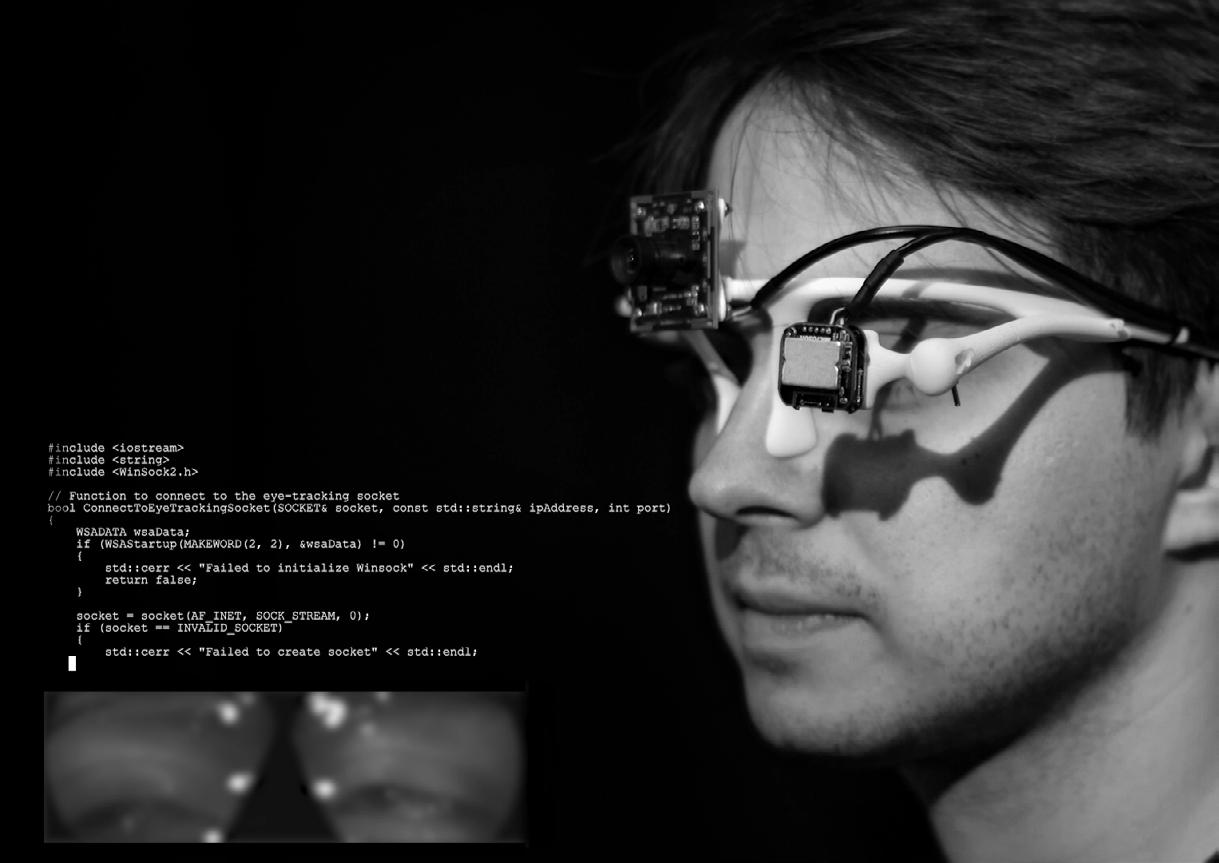
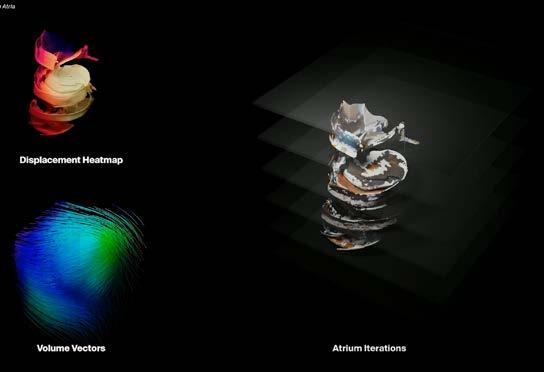
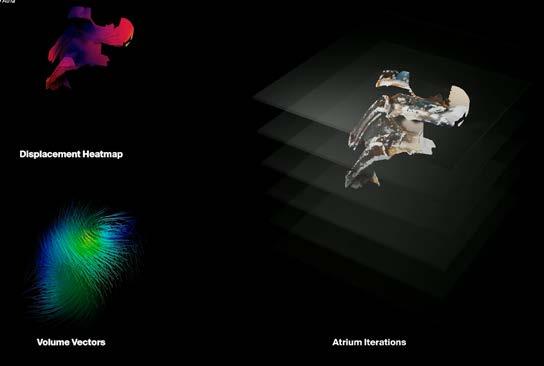
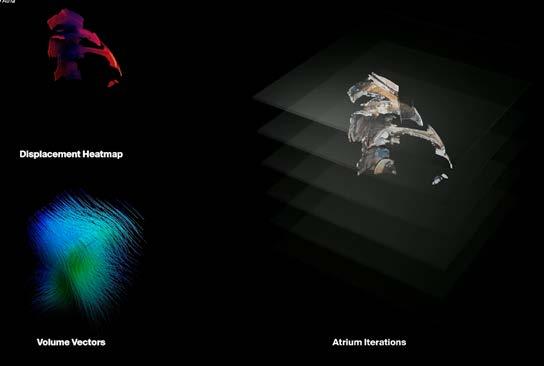

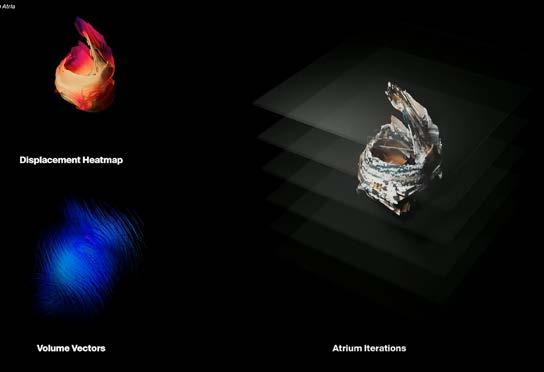
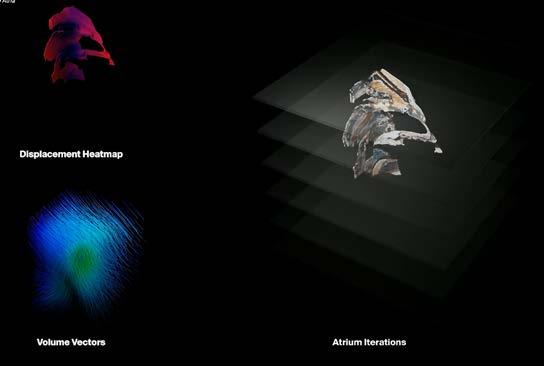
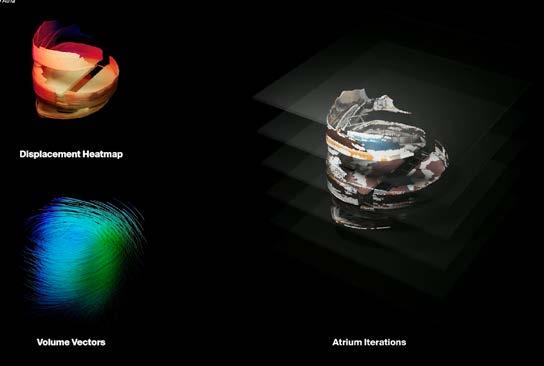

Ocular Envelopes Generations of Atrium Consensus
Ocular Envelopes Framework Transforming Atrium View
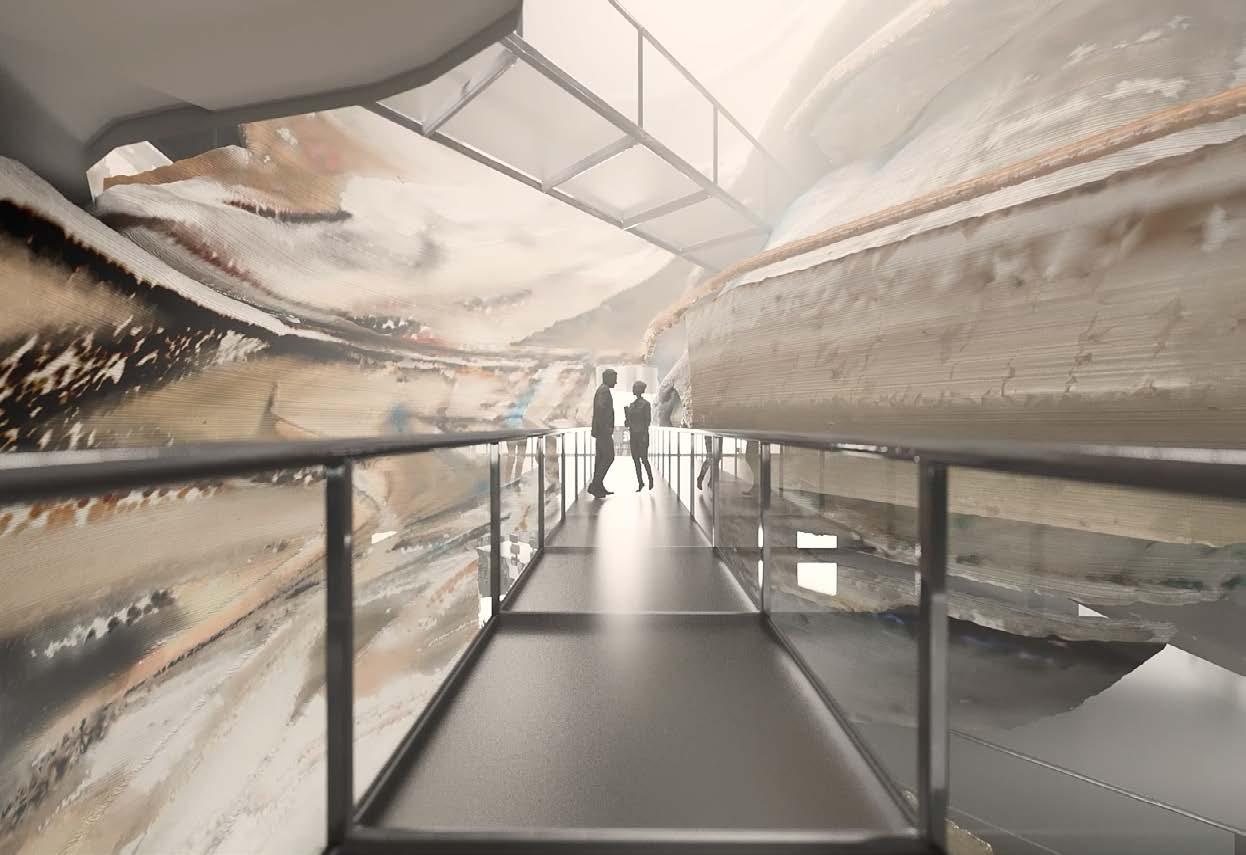

THE POWER OF INSOURCING
London, United Kingdom
Organisation:
Pilbrow&Partners
December 2020 - February 2023
Wojciech
Karnowka, Ralf Lindenmann
Pilbrow&Partners is a 60-strong architecture and urban design studio specialised in addressing complex planning challenges faced in sensitive heritage contexts. I was initially drawn to the office due to my knowledge of its ongoing commitment and ambition towards developing a design approach that fully integrates the latest available resources in technology, modelling and data.
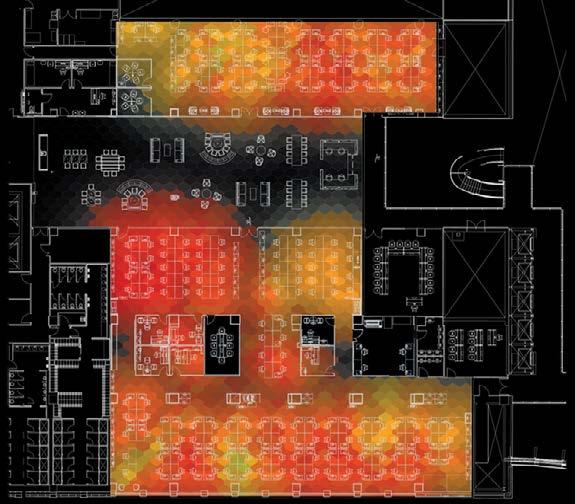
My first involvement with the office arose through a summer architectural placement in 2018. Following this initial three-week period, I was offered a permanent position which continued throughout my degree. The year after I graduated, following a year of gaining experience in a more commercial environment, I was offered and accepted an Applied Computational Research and Design Position. In the following section of my portfolio, I present my personal approach and interest in design, digital strategies and workflows - aspects which I have developed by leading and supporting projects of different scales in professional settings.
Algorithmic workflows mainly focus on projects which are large in scale, complex in objectives and/or rich in regulatory constraints, as allow the involvement of computers as fully-fledged members of the design team. The tools I developed at Pilbrow&Partners can be categorised in three fundamental areas:
• Digital analysis tools – as evaluate available datasets and support designers to understand a given context.
• Design evaluation tools – as analyse proposed geometries and provide feedback on regulatory constraints, environmental impacts and unrealised opportunities.

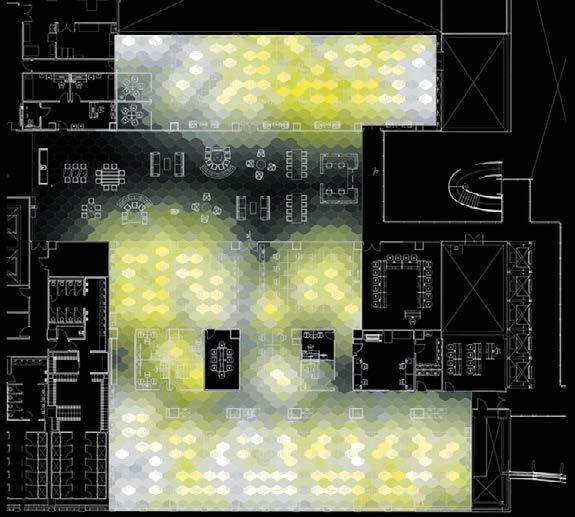
• Generative tools – as allow the iterative generation and analysis of complex parameters and their implications for a given site and the requirements of the brief.
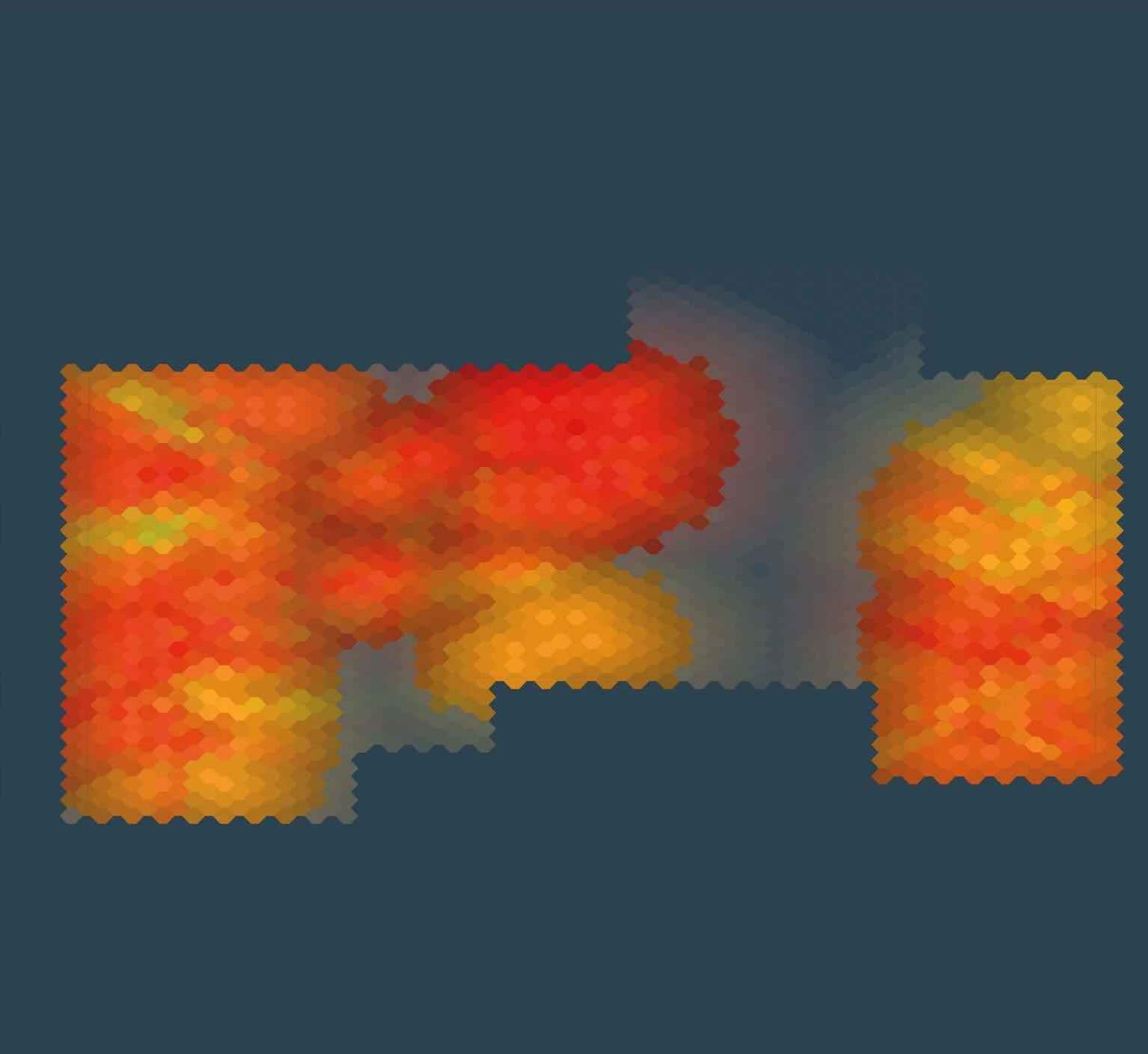

The employment of these digital tools are paired with the undertaking of research as to novel technologies and policy research, enacted to provide designers with greater data provisions and instant, graphical and/or numerical conclusions as to decisions.
The Heamps Representing Resoluts of Employee Survey
Distributed
Team: professional work
Desk Layout, First Floor VERY WEAK VERY GOOD ADEQUANCY OF MEETING SPACE (AVAILABILITY) high low Adequacy of Meeting Spaces, First Floor high low Temperature Heatmap, First Floor high low VERY WEAK VERY GOOD DESK LAYOUT
The tools can be divided further between repetitive and relevant aspects for the majority of projects – such as Sunlight on Amenity, Vertical Sky Component (VSC) and Annual Probable Sunlight Hours (APSH), Average Daylight Factor (ADF) or Daylight Factor (DA).
in Francis Crick Institute in London
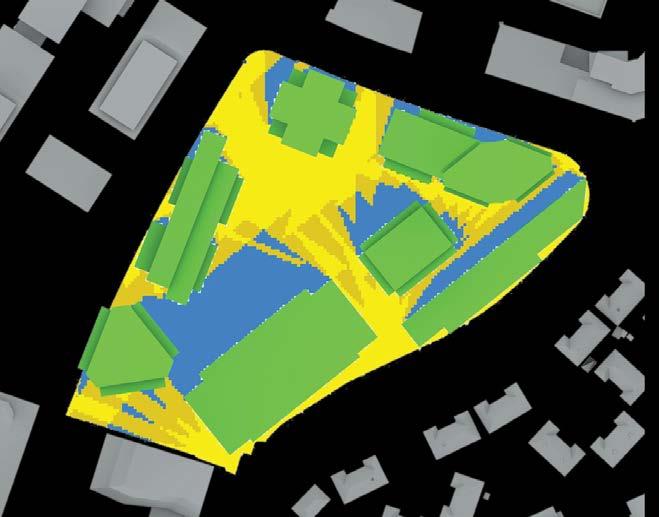
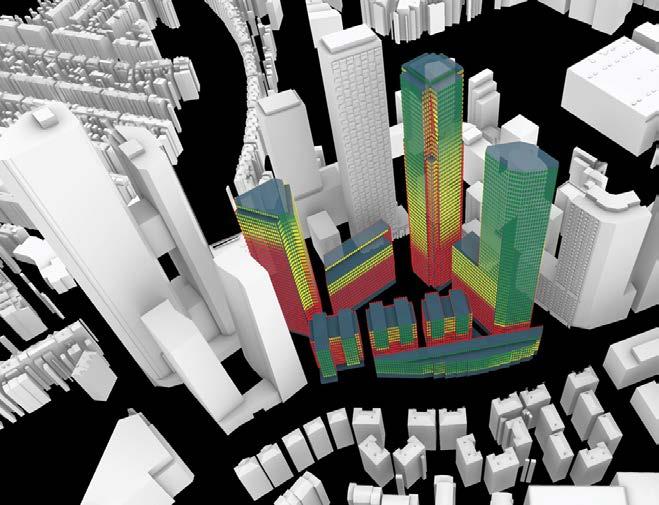
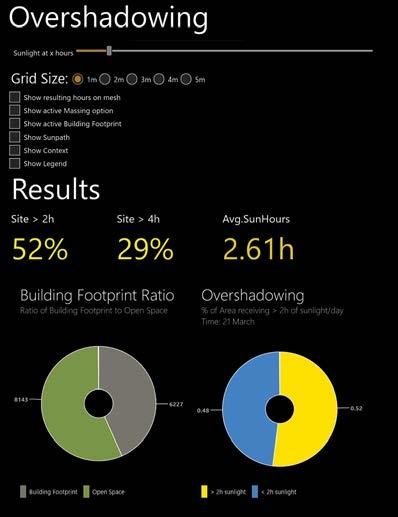
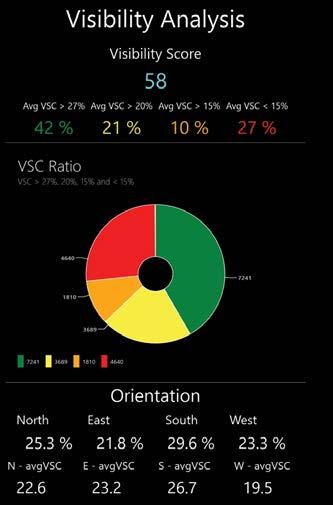
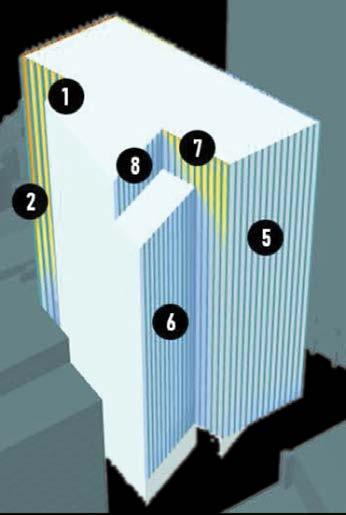

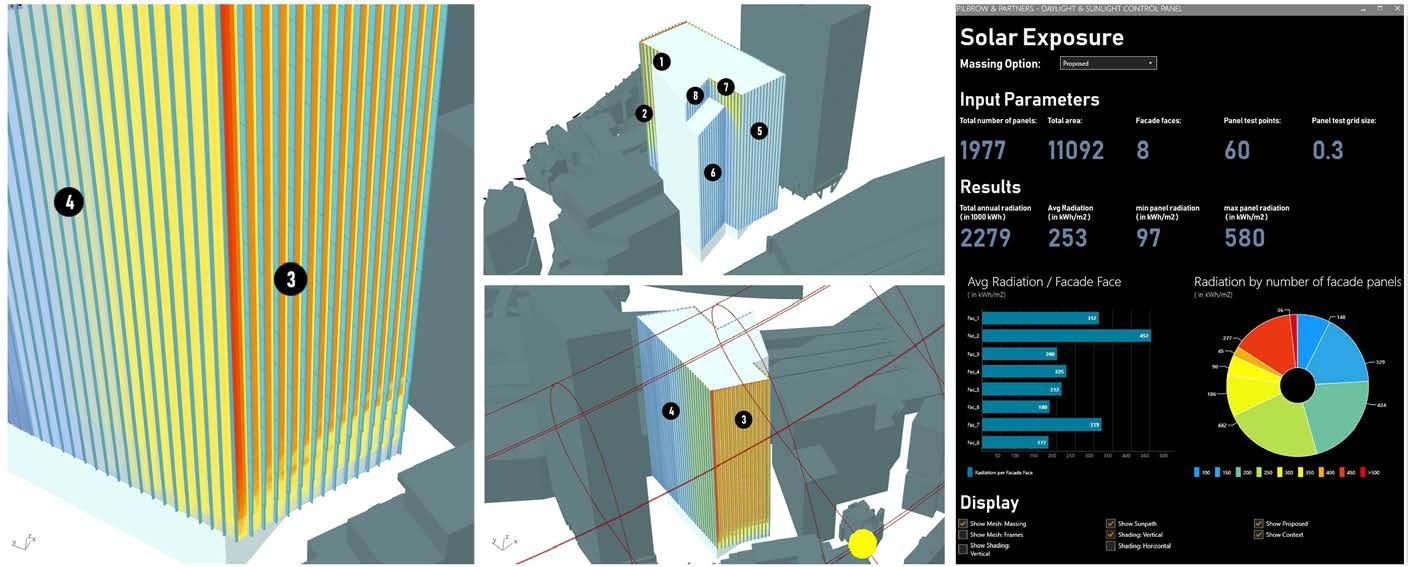

Custom Application Allowing Easy Analysis of the Visibility of the Proposal and its Impact Upon Adjacent Properties Custom Application Allowing Easy Analysis of Proposed Public Space Compliance Against BRE Criteria Custom Application Allowing Easy Analysis of Facade Solar Exposure
Through the possession of a complex understanding of the regulatory policies, the feasibility and reasonability of a proposal in any given context can be assessed instantly. Those tools are designed as eco-system with simple user interface which allows nontechnical colleagues to utilise the outputs without prior programming knowledge – thereby democratising the hidden power of architectural analysis.
The other tasks undertaken are unique, therein requiring the development of custom tools relevant for that particular project. The Evolutionary Spatial Hierarchy Optimisation produced for the Francis Crick Institute, details such an example. The Francis Crick Institute is a world-class biomedical discovery institute in Central London. Following an initial 12-month residence in the new building, the Operations
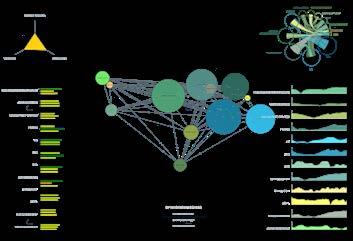
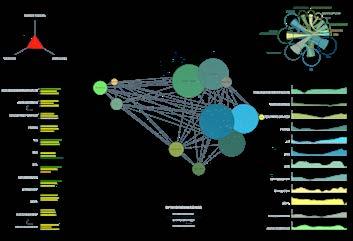
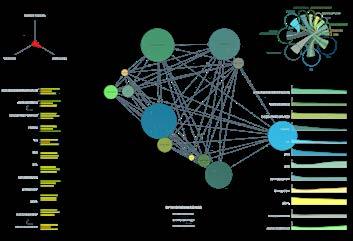
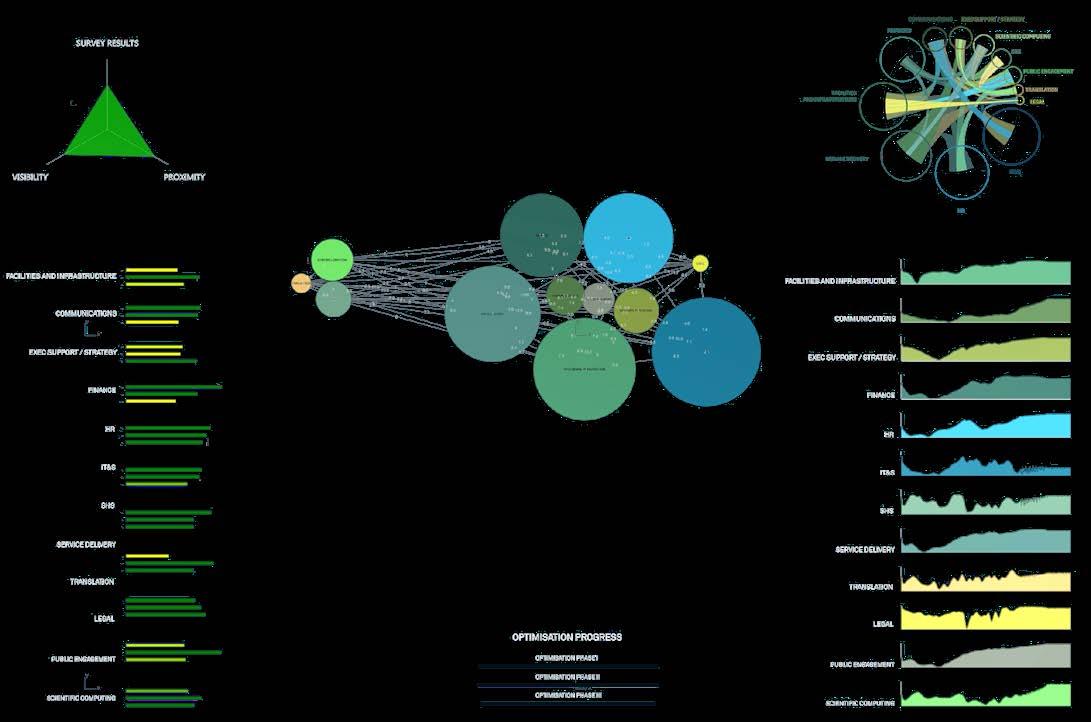
Team sought to improve their working environment and the way through which the building’s users integrated and collaborated with each other. Consequently, we were appointed to develop design options.
Here, I led the development of an experimental methodology to evaluate and compare the indoor workplace qualities identified. Factors such as spatial connectivity, visual perception and desk layout were evaluated in conjunction with environmental parameters (such as quality of lighting, temperature and noise level) to denote what aspects affected the fact-to-face communications witnessed in the office space.
The results were juxtaposed against the results of a survey administered among the building’s users. This combined data was then visualised through various graphical maps to illustrate the inherent spatial potential for programmatic
layout distribution. The second generative study aimed to augment the architect’s decisionmaking in the space planning process using Artificial Intelligence algorithms to enable the generation and evaluation of potential layouts in the Institute.
As we believed in the power of in-sourcing, developing of our own tools and systems gave us an in-depth understanding of the implications of alternative design approaches. Consequently, we worked faster and took advantages from the power gained through the employment of these new analysis and data resources.
Evolutionary Spatial Hierarchy Optimisation, Francis Crick Institute, Generation 25
Evolutionary Spatial Hierarchy Optimisation, Francis Crick Institute, Generation 75
Evolutionary Spatial Hierarchy Optimisation, Francis Crick Institute
Evolutionary Spatial Hierarchy Optimisation, Francis Crick Institute, Generation 96
I have been fortunate to have been able to work in an environment in which I gained opportunities and responsibilities through which to directly contribute towards both projects and the office’s general approach. The professional positions held at the beggining of my career have allowed me to focus on the aspect of design practice I enjoy - at the intersection of novel technology and their implications as means of dealing with technical, social and spatial challenges.

Intimacy Study of the
Attempting to Define Whether Character of the Venue Can be Assessed Through the Audience’s Awarness of One Another [Algorithmic Analysis: W.Karnowka,
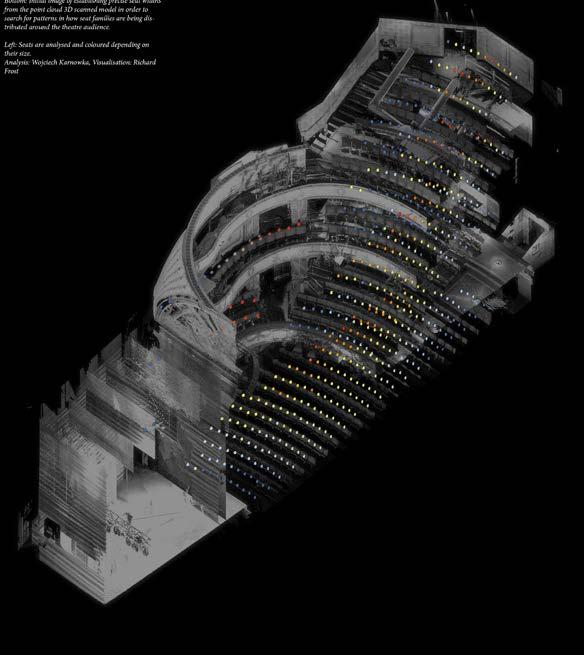

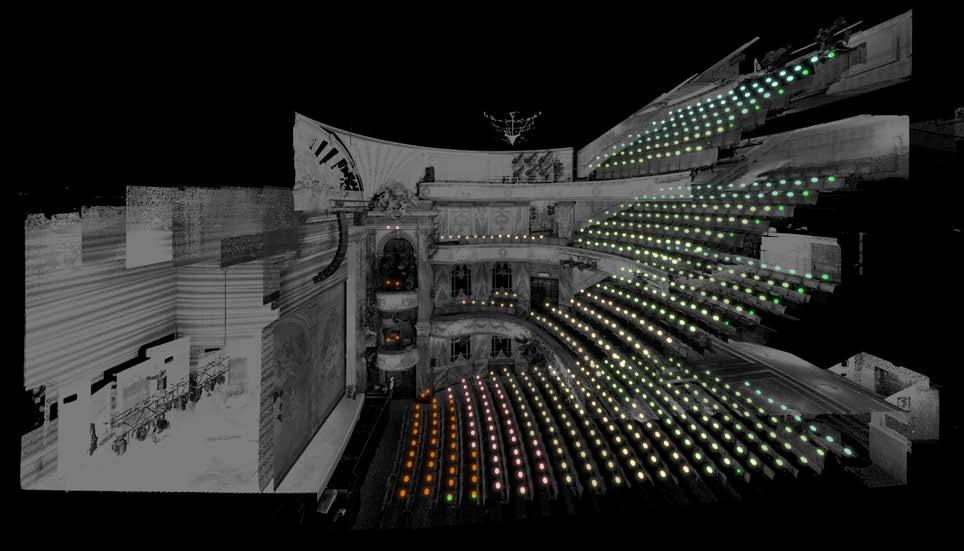 Section of the Lyttleton Theatre With Seats Coloured Depending on Distance From the Stage and the Performer. [Algorithmic Analysis: W.Karnowka, Visualisation: R.Frost]
Novello Theatre
Visualisation: R.Frost]
Section of the Lyttleton Theatre With Seats Coloured Depending on Distance From the Stage and the Performer. [Algorithmic Analysis: W.Karnowka, Visualisation: R.Frost]
Novello Theatre
Visualisation: R.Frost]
Project QR Code
Section of the Novello Theatre With Seats Coloured Depending on Distance From the Stage and the Performer. [Algorithmic Analysis: W.Karnowka, Visualisation: R.Frost]
During my time at Pibrow&Partners, I initially focused on rapidly evaluating, analyzing, and generating. As the team expanded, I transitioned to strategically bridging the gap between operations and technology. I played a key role in driving operational efficiency and promoting a culture of continuous learning, leading software and tools training sessions for colleagues.
I successfully implemented GitHub, a widely adopted version control and collaboration platform, to enhance team communication,
knowledge sharing, and efficiency, addressing challenges in Rhino/Grasshopper development.
For various early-stage projects, I developed strategies to automate context evaluation, density map generation, and diagram creation, crucial for project submissions within and outside the UK.


In my next role, I seek an organisation dedicated to operational excellence, fostering learning, curiosity, and initiative.
Cumulative Accessibility to Cultural Infrastructure (Proximity to Point of Interest)
In our quality assessment, we formed an attractiveness index, comparing similar height and density schemes across different UK locations. We divided London boroughs and wards into identifiable grid cells, enabling the analysis of extensive spatial data and the creation of a location scoring system. Our datasets encompassed points of interest, nearest neighbour accessibility analysis, and more.
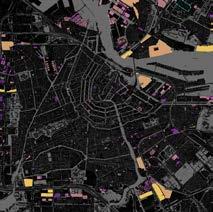
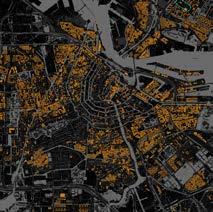
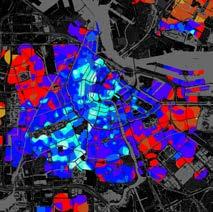

 Urban Analysis of Amsterdam City: Land Value, Housing Association Properties, Development Plan
Cambridge Biomedical Campus Cambridge Science Park Network
Cambridge Market Ward Network
Cambridge Station Network Chesterford Research Park Network
Urban Analysis of Amsterdam City: Land Value, Housing Association Properties, Development Plan
Cambridge Biomedical Campus Cambridge Science Park Network
Cambridge Market Ward Network
Cambridge Station Network Chesterford Research Park Network




Automated Annual Daylight Factor (ADF) Analysis of Dublin Brewery Project. The Analysis Enabled the Team of Analyse 600+ Plans to Understand the Levels of Compliance in the Proposed Plans The Algorithms Are Developed to Review the Density of Traditional Developments. We Analysed Various Metrics Such as Building Footprint Area, Land Footprint Area, Etc. The Analysis Compared Residential Typologies in Different Areas, Including North Acton, Bloomsbury, Belgravia Building Footprint Area Land Footprint Area Block Footprint Area Maximum Height Site Coverage Ratio Block Coverage Ratio
OXFORD STREET
London, United Kingdom
Organisation:
Project Team:
Pilbrow&Partners

July 2022
Wojciech
Karnowka
Proposed mixed-use building in Oxford Street district, featuring M&S flagship store and offices designed to acheive BREEAM Outstanding and WELL Platinum.
My primary role in this project involved integrating the analysis of environmental factors into the day-to-day design process. We devloped the Peak Solar Loads analysis tool to assess different facade options against the LETI 40W/h climate change target. This analysis significantly influenced our facade design approach.
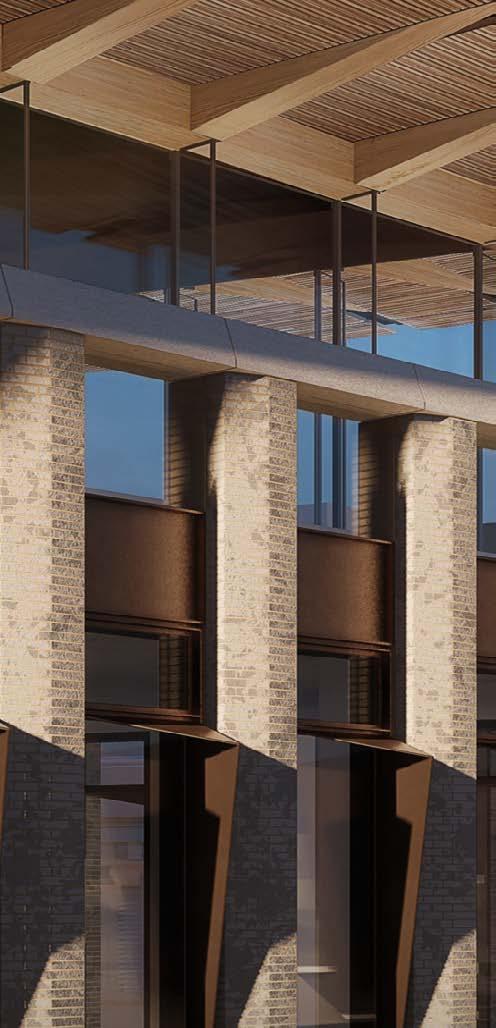

Initially, we examined the current design iteration and identified areas for improvement. In the next step, we created a parametric study of the facade to understand its interaction with the sun’s movement and identify potential design adjustments to reduce solar gain, particularly the Peak Solar Loads (top 1% and 2.5% of annual gain). We simulated various scenarios, adjusting glass dimensions and window U-values to assess their impact on peak internal floor loads and identify areas for improvement. The generative model allowed us to explore how shading element parameters affected the design and analysis results
These thorough analyses provided insights into specific design changes to enhance energy efficiency, minimise environmental impact, and meet energy standards.
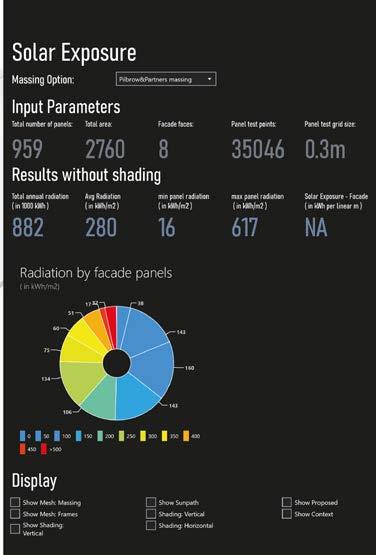
458
professional work
Right: Detail 3D Cornice View, Perspective of South Facade [images by Pilbrow&Partners]
Analysis and evaluation of the facade focuses on reduction of Peak Solar Loads, here to the clefts and level 5 recess afforded by the cornice and vertical fins on the proposed facade. The images on the right display loads with and without fins in multiple configurations. The analysis was a key driver in the final design.
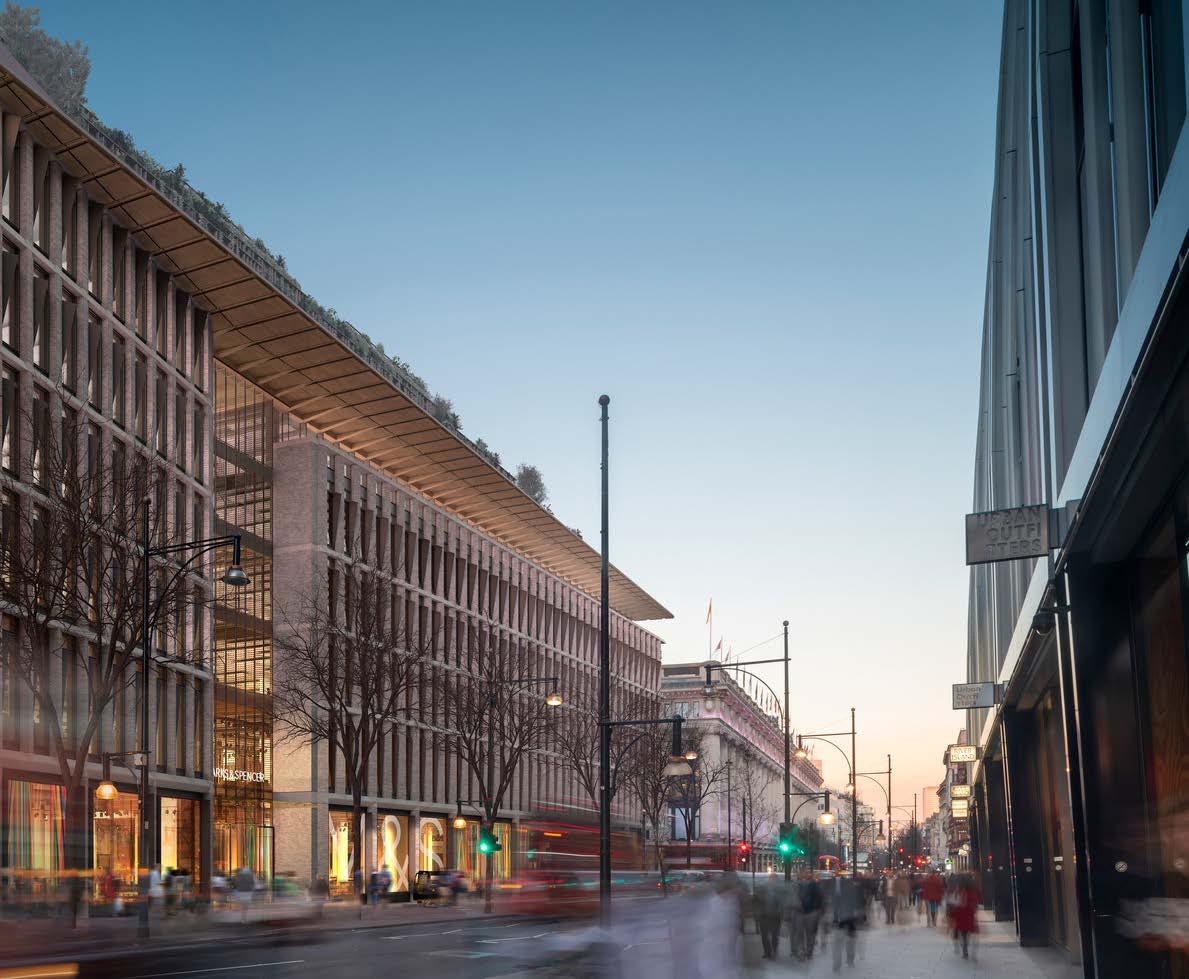
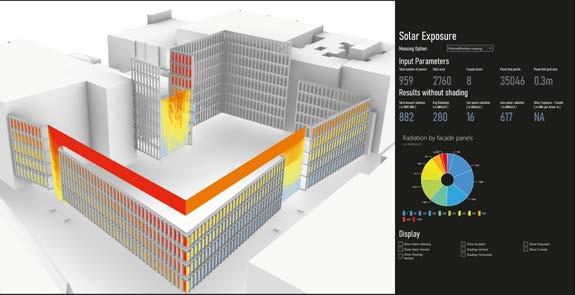

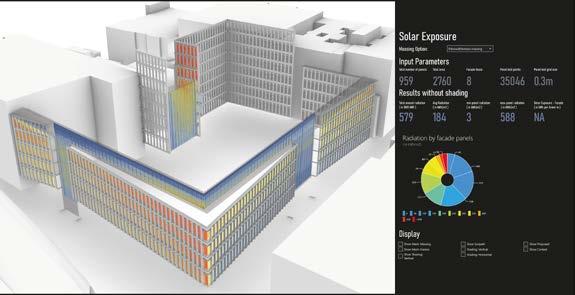
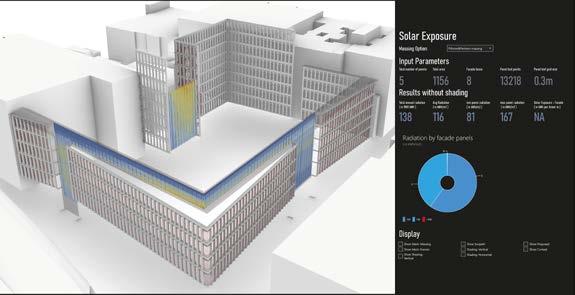
The building features a mixed-mode ventilation strategy, incorporating high-level openable windows in each 3-meter office bay module to enable natural ventilation.

The diagrams below display the caculated average positions of the sun to protect the facade from, in order to mitigate the Peak Solar Loads impact on the overal operational energy.
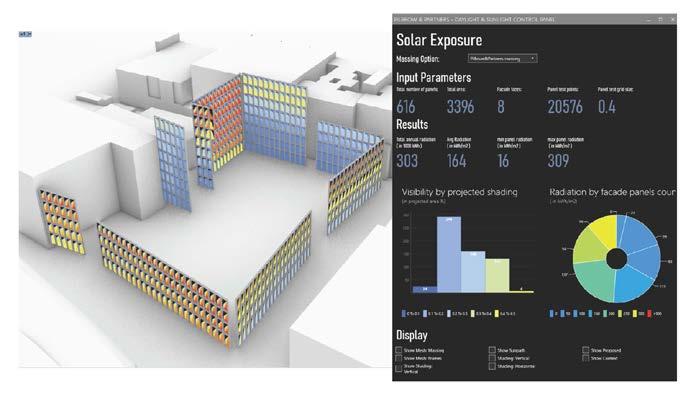

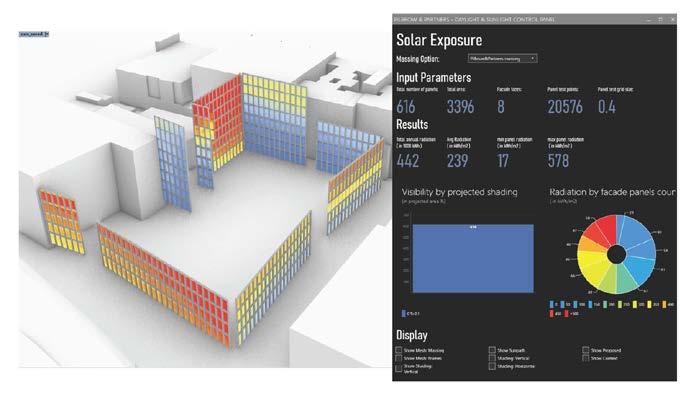
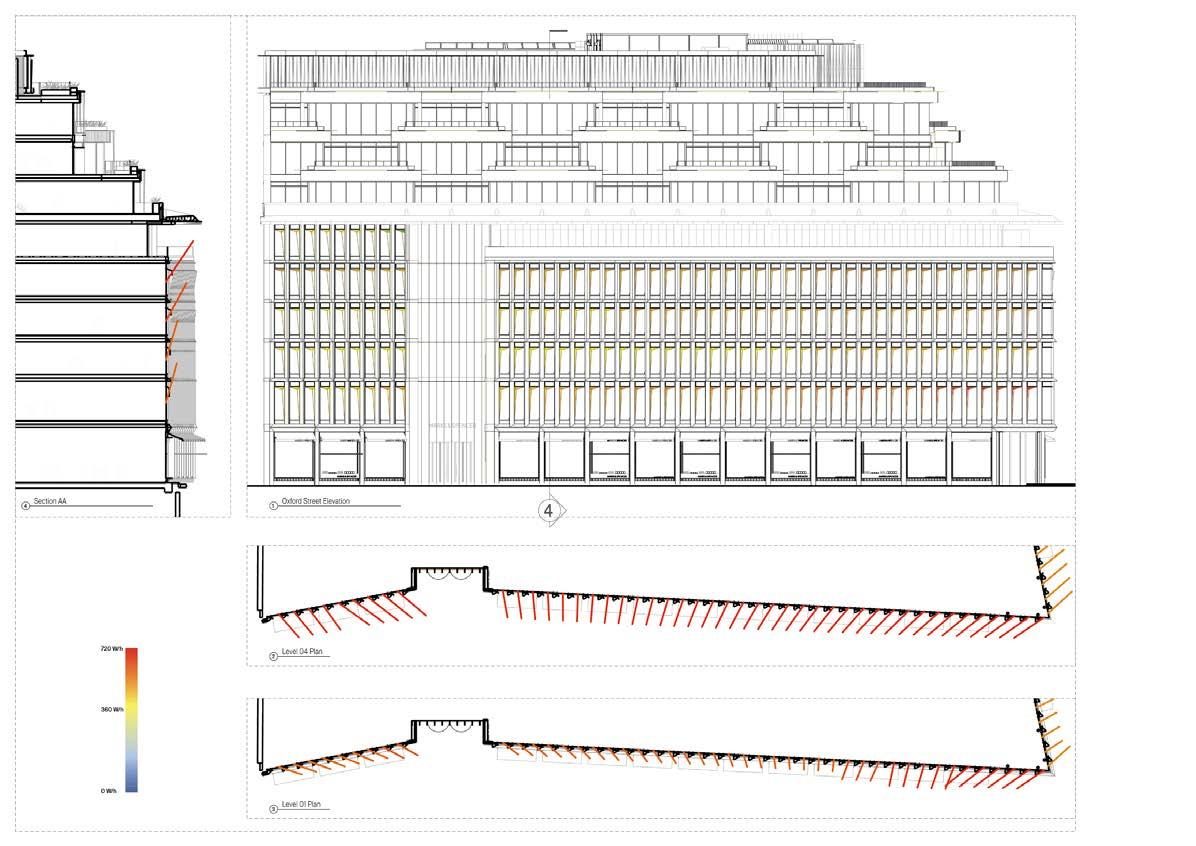
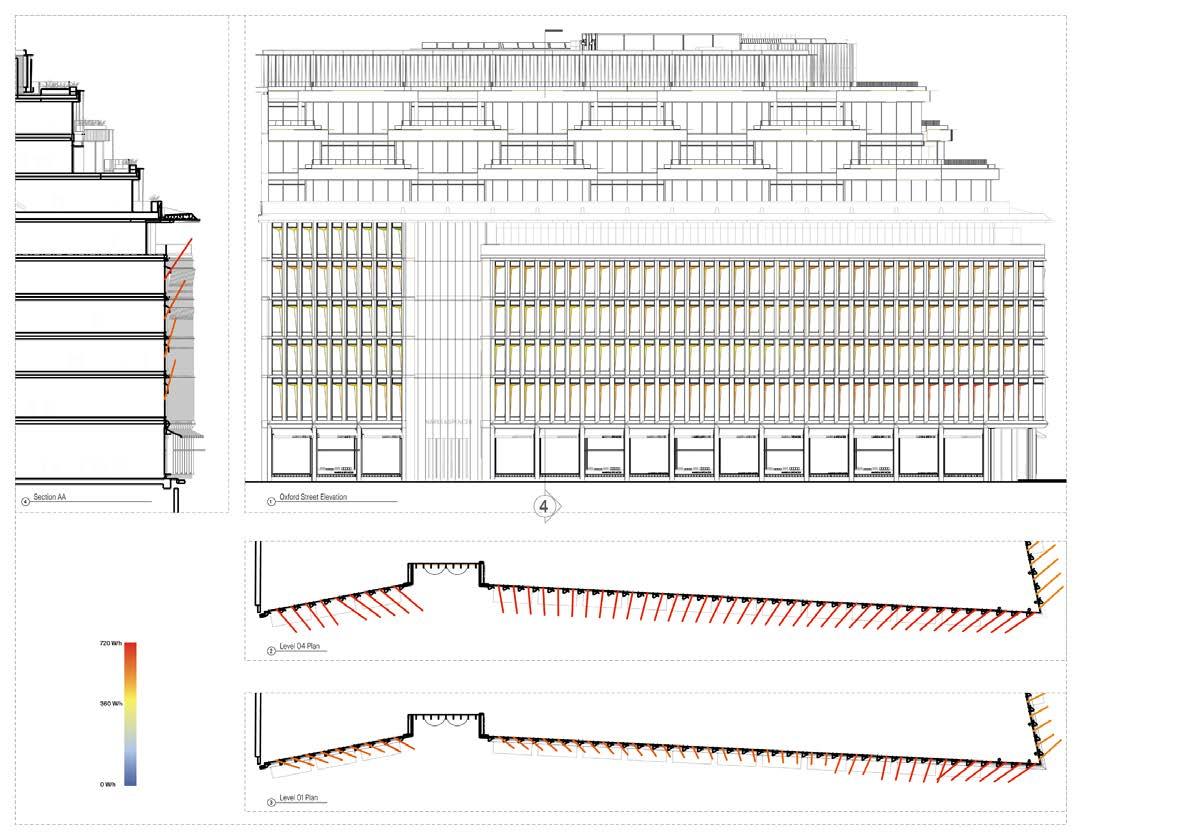

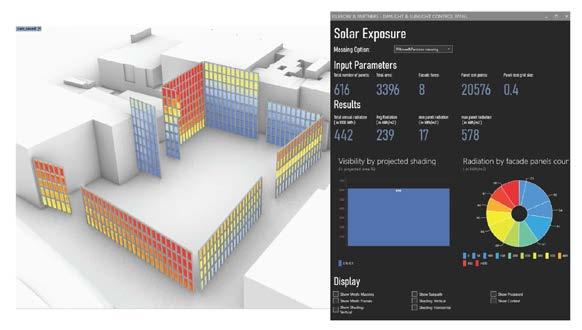
The building is rotated very slightly off a North south access but in essence possess façades facing almost due North on Portman Mews South, East on Orchard Street, South on Oxford Street, and West on Granville Place. The established urban block pattern and grain, a legacy of the emergence of large retail based amalgamated blocks in the early 20th century, provided an established building line and orientation façade orientation.
The building is rotated very slightly off a North south access but in essence possess façades facing almost due North on Portman Mews South, East on Orchard Street, South on Oxford Street, and West on Granville Place. The established urban block pattern and grain, a legacy of the emergence of large retail based amalgamated blocks in the early 20th century, provided an established building line and orientation façade orientation.
The building is rotated very slightly off a North south access but in essence possess façades facing almost due North on Portman Mews South, East on Orchard Street, South on Oxford Street, and West on Granville Place. The established urban block pattern and grain, a legacy of the emergence of large retail based amalgamated blocks in the early 20th century, provided an established building line and orientation façade orientation.
The development of the massing and articulation in townscape is covered earlier in this document in chapter 4.
The development of the massing and articulation in townscape is covered earlier in this document in chapter 4.
Left Top: Peak Solar Radiation Vectors on South Elevation
The development of the massing and articulation in townscape is covered earlier in this document in chapter 4.
Bottom: Proposed Shading Hoods
Right: Perspective of Entrance [render by Richard Frost]
307
3D images and charts recording the analysis of solar loading utilised to design the proposed solar hoods to lower levels. 3D images and charts recording the analysis of solar loading utilised to design the proposed 307
Elevations and sections recording the iterative parametric analyses that was utilised in designing the elevational detail.
Elevations and sections recording the iterative parametric analyses that was utilised in designing the elevational detail.
306 Pilbrow & Partners
Elevations and sections recording the iterative parametric analyses that was utilised in designing the elevational detail.
3D images and charts recording the analysis of solar loading utilised to design the proposed solar hoods to lower levels.
Solar Exposure Analysis Without Shading
Solar Exposure Analysis With Constant Shading Elements (hoods)
Solar Exposure Analysis With Variable Shading Elements (Hoods)
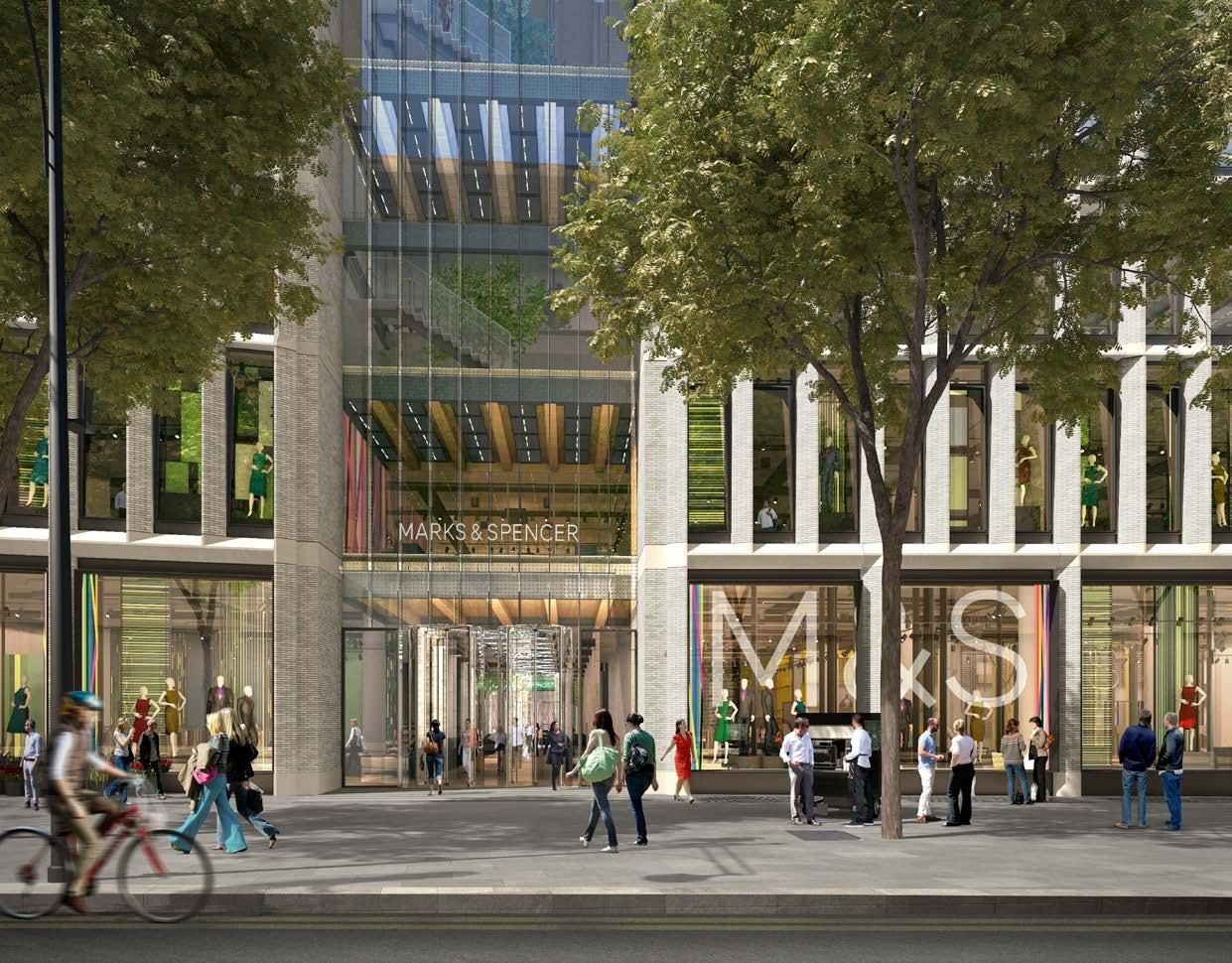
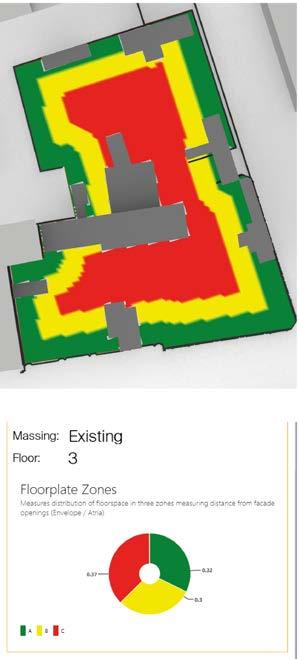
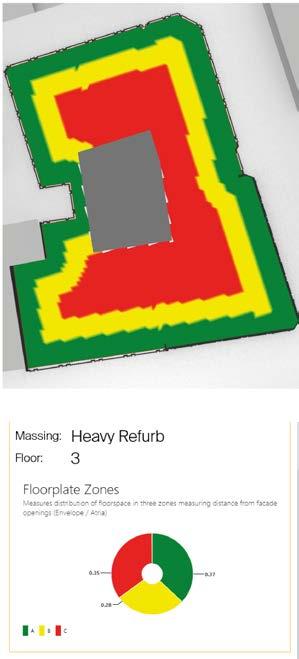

Floorplate Zones Analysis of Exisitng Building at Floor 3 Floorplate Zones Analysis of Proposed “Heavy Refurbishment” Option Floorplate Zones Analysis of Proposed “New Construction” Option
plusX.Space
London, United Kingdom
Organisation:
Project Team:
Pilbrow&Partners / Research
May 2021
Wojciech Karnowka
Architects and developers are actively pursuing the automation of diverse aspects within the design process. Despite its growing popularity, particularly in the media, it remains accurate to say that generative tools have yet to achieve widespread adoption. I have been working on an algorithm aimed at partially automating office space planning. This approach is especially pertinent to refurbishment projects, where rapid feasibility assessment is crucial. The algorithm generates and assesses layouts based on multiple criteria, encompassing environmental considerations.

Originally conceived as a feasibility study at Pilbrow&Partners for PlusX, a UK-based developer, the project has evolved. While the initial studies were halted, I have continued to develop the generative model to facilitate automated fitting for potential projects. My aspiration is to refine the algorithm further, with the ultimate goal of introducing it as a opensource project.

This endeavor and its algorithms draw inspiration from a range of well-established and documented algorithms. The concept is influenced by the approach outlined in “Augmented Space Planning Using Procedural Generation to Automate Desk Layouts” (Anderson et al., 2018).
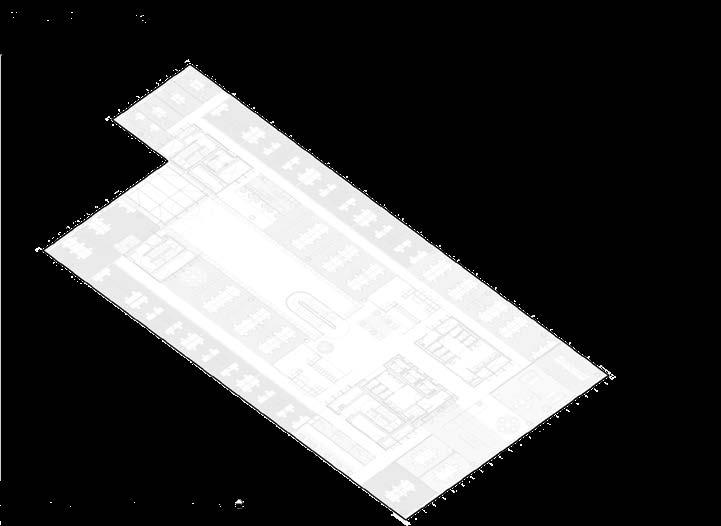
Select
Outline
Type of Algorithm
Define Grain
Direction
Layout Parameters
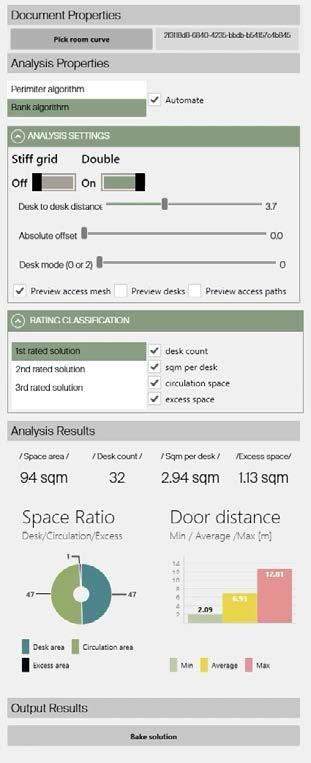
Priority
Outcomes
Solutions
Pool
Solution
Statistics
Output Solution to File
professional work
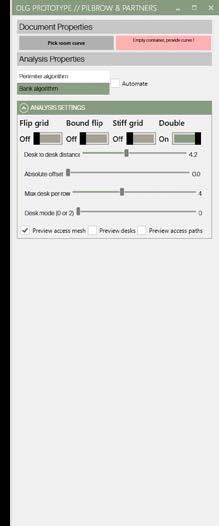



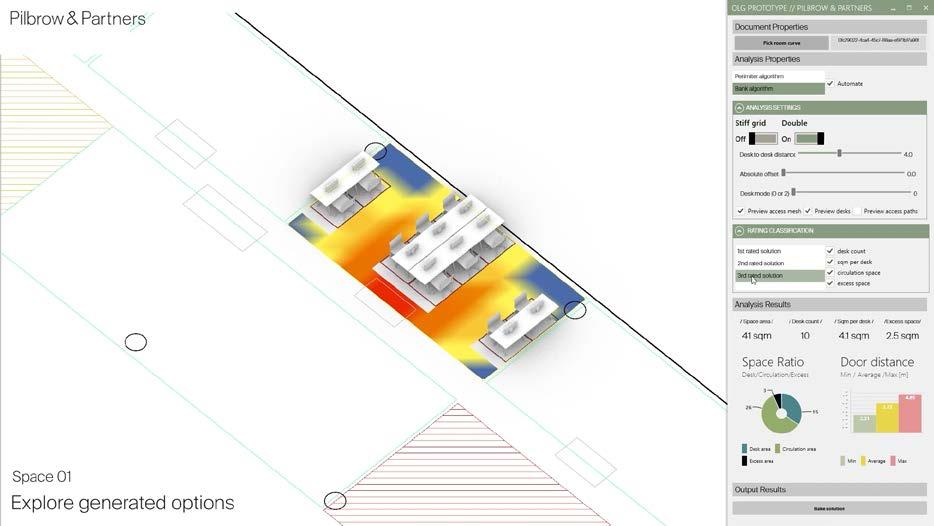
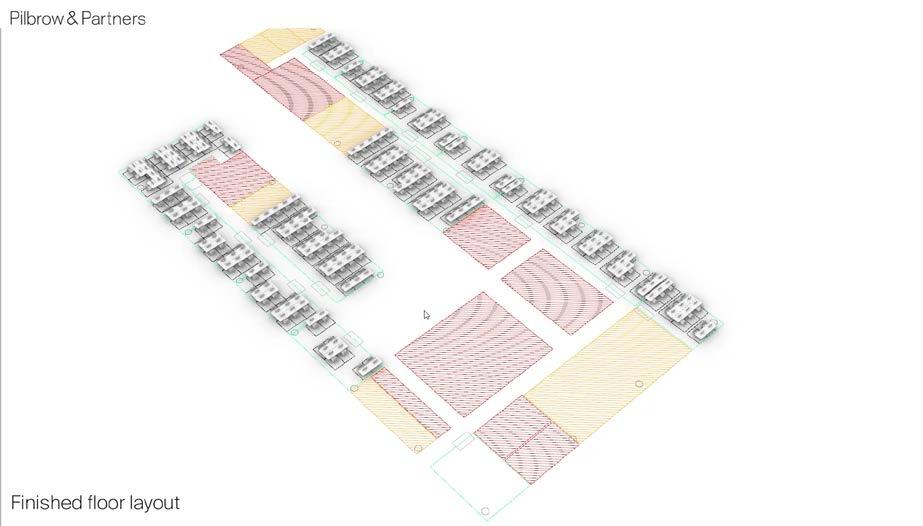

Project QR Code
BORGO MIRANDA
Monte Bre, Lugano, Switzerland
Client:
Project Team:
Gruner&Friends (remote)
March 2022
Wojciech Karnowka
Calvin Sin
Gruner & Friends designed Borgo Miranda, the 5-star hotel resort in the ticinese village of Monte Bre. Monte Bre is situated on a 1.4 hectare mountainous site above the towns of Locarno and Ascona. It enjoys views towards the south over the Lago Maggiore.
The objective was to create a village that integrates into existing tissue of Montre Bre. The data collected from the site and its envrionment was used to evaluate and optimise the design - with particular focus on views, surfaces and cost. The position of each space is algorithmically decided based on topography, and scoring system developed to evaluate quaity of each configuration.
Topography
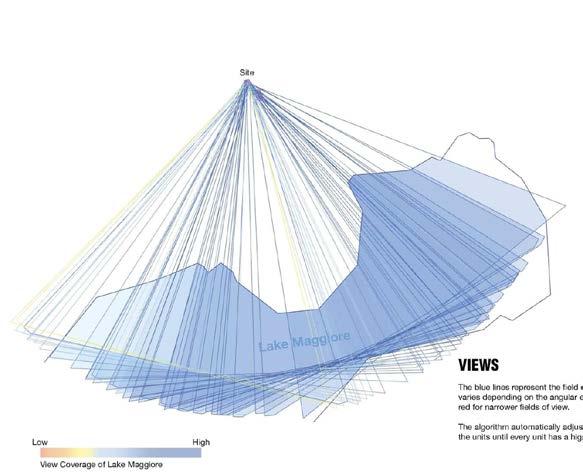
The colour gradient displays slope of the topography, with red depicing step areas and green flat areas. Algorithim then places building strategically to facilitate access, to reduce circulation space and minimise excavation.
Clusters
Buildings are clustered to minimise facade surfaces whilst mainitainig local typologies. Consequently, complexity is reduced in construction and design.
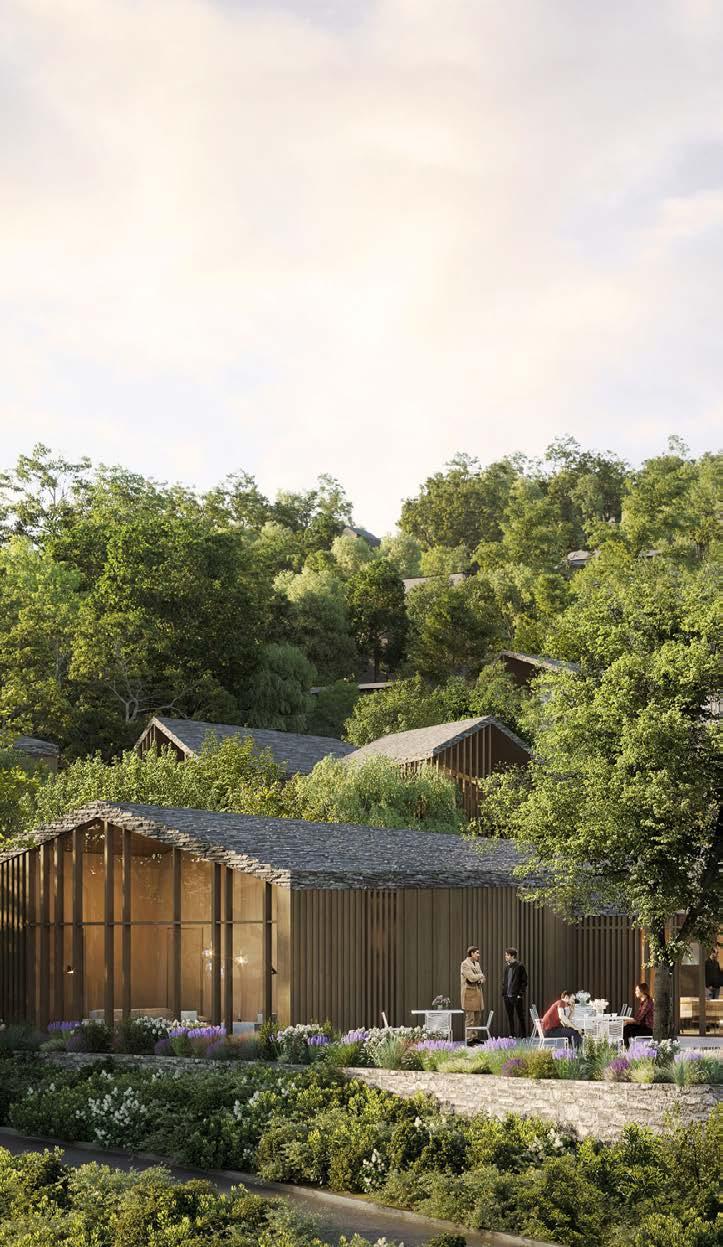
View Study
Each individual house in cluster has freedom to rotate and re-locate within X,Y direction to avoid overlapping views to acheive an overfall better view.
professional work
Global View Study From Site to Main Focus Area - Lake Maggiore
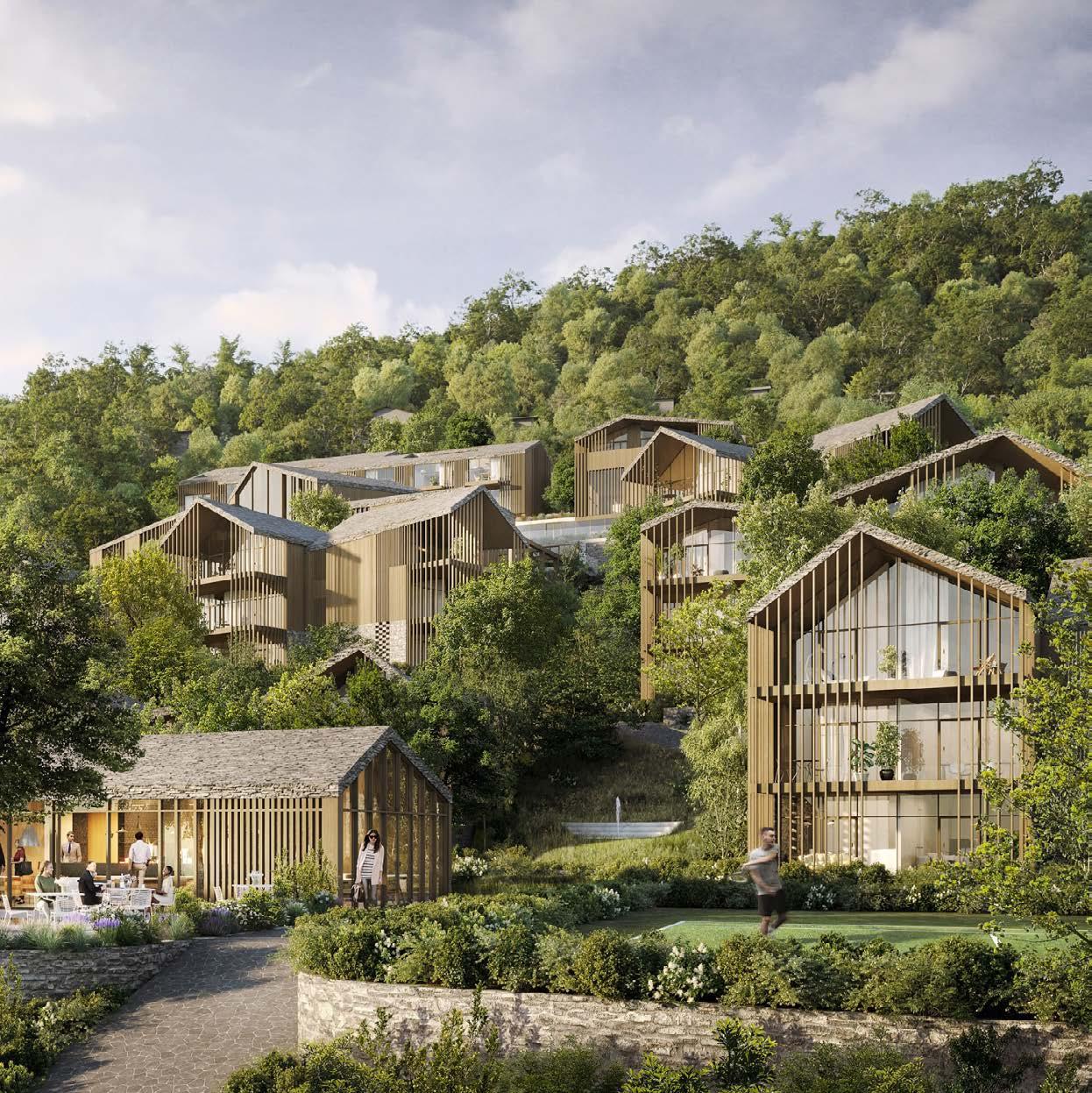
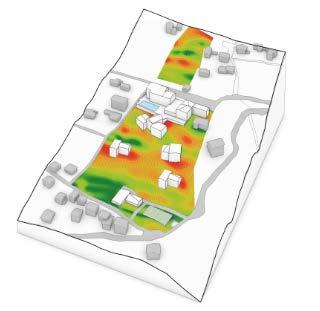
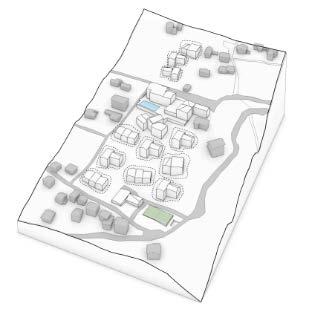
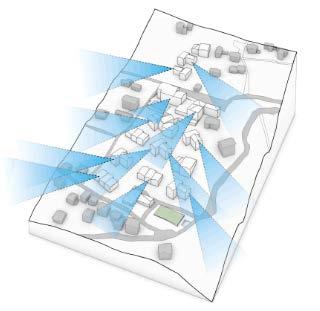
Topography Analysis Heatmap Clustering Of Buildings Based On
Analysis
Topography
Views From Clusters
CHAM
Cham, Switzerland
Client: Project Team:
Gruner&Friends (remote) March 2022
Wojciech Karnowka Calvin Sin
Gruner&Friends actively participated in an extensive urban study centered around the potential of the “Cham North” site. Spanning over 26,000 sqm, the site boasts a gentle slope that leads toward the Lorze stream.
Positioned along Knonauerstrasse, “Cham North” is poised to serve as the starting point for the forthcoming Cham - Hunberg bypass. This strategic location embeds the area into the transit network and positions it as a notable entrance to Cham.
Throughout the project, in collaboration with Calvin Sin, our design team took the lead in formulating scripts that could generate and assess various massing models based on different typologies. We further optimised specific parameters within the designated design domain, all while considering the site context and ensuring compatibility with the views from neighboring buildings.

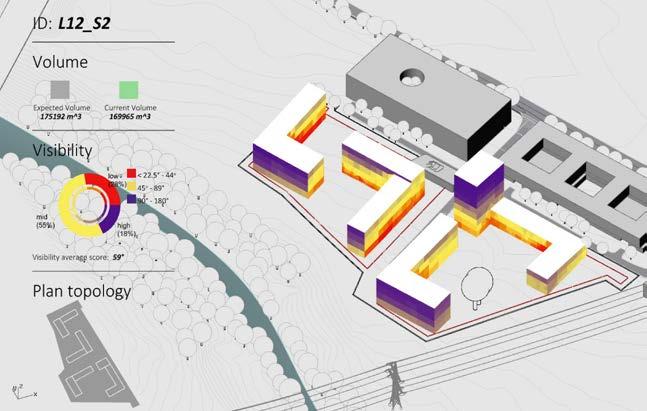
Right:
Bottom Right: Selection of Building Typologies Explored Through Evolutionary Search and Analysis
Bottom: Evolutionary Solver Main Viewport - Cubes Indicate Dominated Solutions of Three Key Parameters: Visibility, Volume and Area
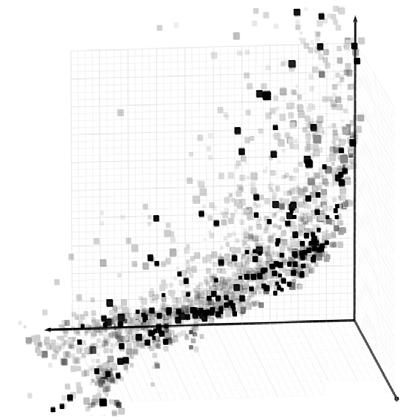
professional work Visibility Volume Area
Exterior Perspective [render by Gruner & Friends]
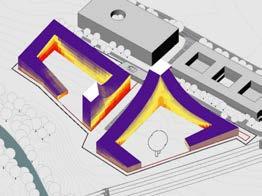
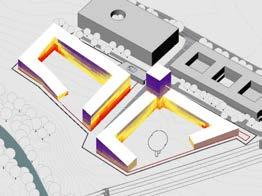
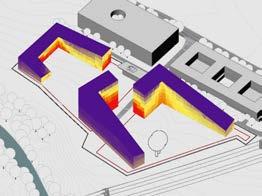
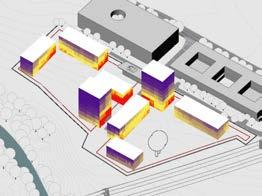
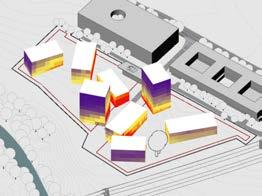
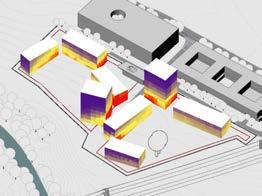


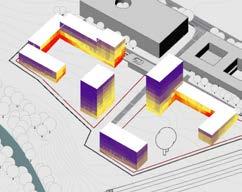
Evaluation.Toolkit
London, United Kingdom
Client:
Project Team:
Gruner&Friends
March 2021
Wojciech Karnowka Calvin Sin
The Evaluation Toolkit comprises tools commissioned by Gruner&Friends, a small practice based in Switzerland, to provide reliable analytical capabilities for architectural proposals during the early design phases.


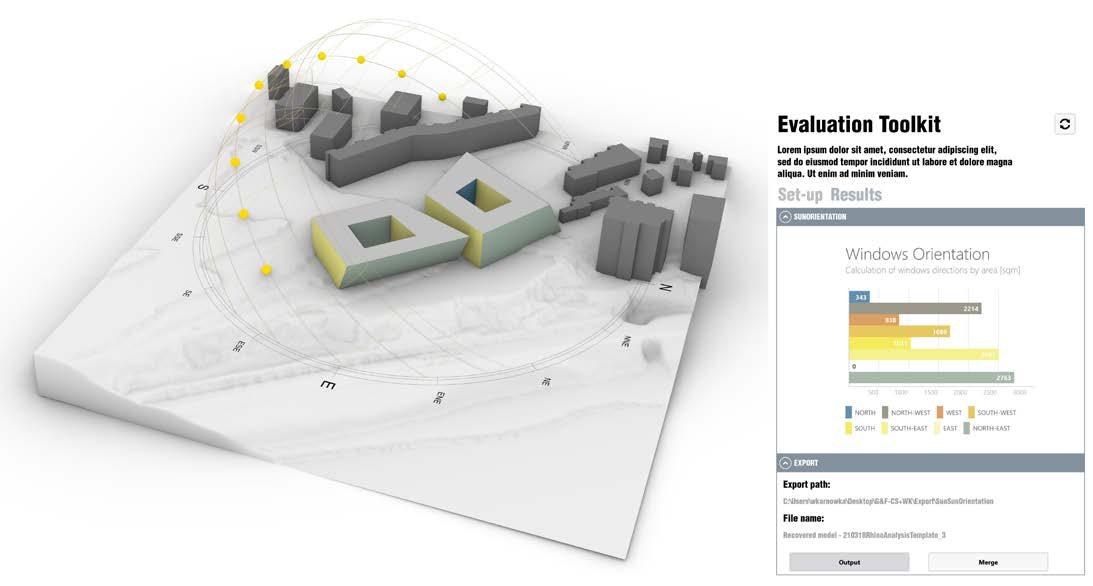
Collaborating on prior concepts like CHAM and Borgot Miranda, the office management realised that the analysis methods developed were pertinent not only to those projects but also to many early-stage designs. The project involved creating a toolkit within Rhino, scripted using Grasshopper and Python. It included a user interface catering to non-technical users, enabling analysis of designed massings.
The toolkit encompassed tools focusing on Daylight (both proposed and existing), Visibility, Area, and Topography characteristics. In collaboration with german-speaking architect, we established benchmarks and parameters for testing against Swiss building codes and compliance.
Since its inception, the toolkit has become widely utilised within the office to enhance efficiency. It has also been showcased during office presentations and at the University of Applied Sciences Northwestern Switzerland (FHNW).
Windows Orientation Analysis
professional work
Analysis of Visibility of Existing Window Openings
Analysis of Visibility of Proposed Window Openings
Toolkit Header
Refresh Button
Every time Rhino geometry is modified, the script requires a refresh. The button will also reset the analysis.
Subtitle
Tab Name
Name used for analysis export. The default name will copy the current Rhino file name.
Define
Directory for analysis export. The default directory is the current Rhino file path.
Save Visibility Mode
Before analysis begins, the user can save the layers state. Once the project path is set, the script will hide all layers beside ‘Visualisation’; this is to provide controlled and consistent visualisation. Once the path is reset, the script will restore the visibility to that saved layer state.
Analysis Geometry Section
Settings - Analysis Specific
Set analysis specific settings.
Analysis - Activate Section
Toggle activates the analysis; once switched on, the results tab will appear, displaying analysis results and export options.

Display Settings Section
Controls visibility/graphic setting of Rhino also allows displaying north direction.
Section Name Define Project Name
Project Path
Evaluation Toolkit Initial State
ENNCO RENDER
Monroe, WA, USA
Client:
Project Team:
Ennco
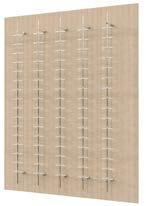
August 2022
Wojciech Karnowka (lead, dev)
Jacek Karnowka (dev)
The project encompassed the development of a Rhino plug-in commissioned by Ennco, a company specialising in spectacle display panels. The primary goal was to devise a user-friendly tool, allowing Ennco’s staff, irrespective of their familiarity with Rhino or rendering technique, to assign materials and generate renders in various configurations. Additionally, the plug-in required functionality, to open files including multiple models, and their separation into separate files.
We conceived a comprehensive solution that featured a material library, an intuitive interface, and a repository of prior solutions. This database organised material lists based on past applications, considerably enhancing operational efficiency. The project’s impact on Ennco’s material preparation process was transformative, markedly expediting their workflow. Following implementation, the plug-in has facilitated the rendering of many images— potentially numbering in the thousands.

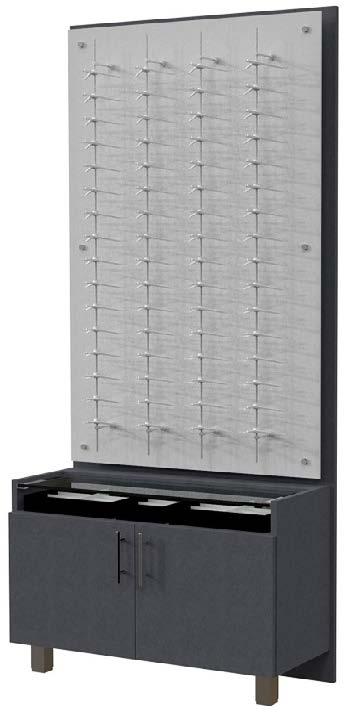
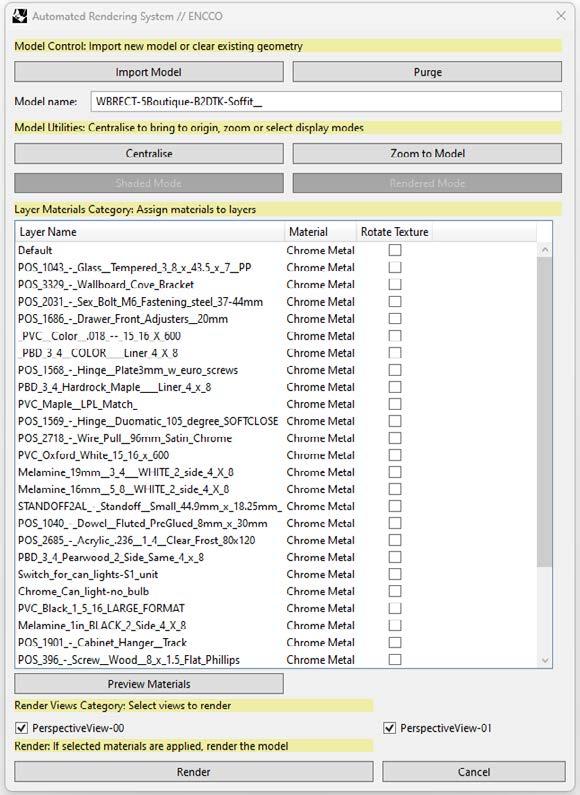
Right: Automated Renders Selection Generated by the Tool
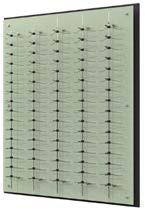


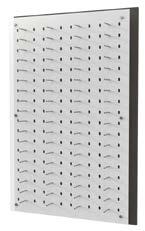
Bottom: Selected Code Sample
Bottom Right: Automated Rendering User Interface with ETO Forms
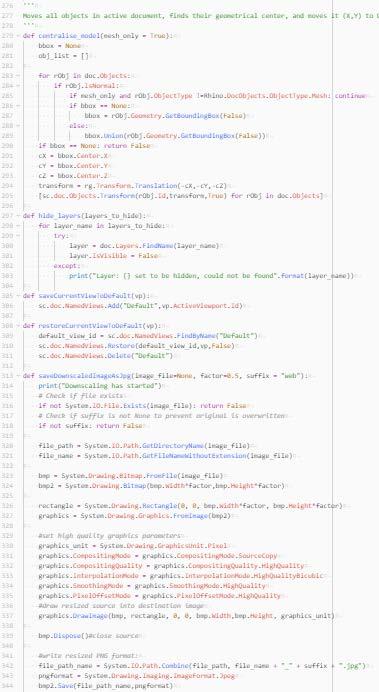
professional work
THESIS
London, UK
Institution: Author: Advisor:
The Bartlett School of Architecture, UCL June 2023
Wojciech Karnowka dr Abel Maciel
My MArch Thesis has been accepted for publication at the Design Computation Input/Output Conference (DCIO 2023) and is currently pending reviewer feedback.
The paper examines the interplay between mental models, design models, and natural design algorithms as a means to investigate the relationship between design practitioners’ cognitive processes and artificial design algorithms.


Since the 1960s, various digital space planning algorithms have been explored, differing in their scope, objectives, and efficiency. However, none of these solutions have come close to matching human-led designs. The thesis hypothesises that the lack of consideration for some of the fundamental components present in natural design algorithms might be the missing link in artificial space planning research.
Right: Thesis Cover Page
Bottom: Algorithms Scores in Thesis Conclusion
Bottom Right: FBS Ontology Diagrams Adopted from Gero (1990)
Automated Architectural Space Planning Systems:
Cognitive Challenges and Opportunities
BARC0011 MArch Advanced Architectural Thesis
Wojciech Karnowka
UNIVERSITY COLLEGE LONDON
academic work
I/P O/P ACC T-E A V S 1 Wong and Chan, 2009 Evolutionary Algorithm Propose graph encoding of adjacencies constrain, to optimize layout generation N/A 3212 1121 2 Verma and Thankur 2010 Evolutionary Algorithm Single and Multi-storey apartment considering stack N/A 3213 1221 3Sonmez, 2015 Similarity Based Evolutionary Algorithm Similarity-based evaluation for evolutionary algorithm Hand-picked selection of spatial sequences of existing buildings 2112 1221 4Hua, 2016 Statistical Region Merging; Subgraph Matching; Simulated Annealing Irregular floorplans generation, from image using statistical region merging, subgraph matching, and simulated annealing Hand-picked dataset (2030 buildings, per category) 2213 1221 5Wu et al. 2019Deep Learning Two-stage approach: (A) room placement, (B) walls and functional divisions RPLAN (80,000 samples) 2314 4231 6Chaillou., 2019 Pix2Pix Generative Adversarial Network Three-step generation model based on an image-trained dataset Self-prepared dataset of 800 residential apartment layouts 2444 4211 7 Rahbar et al., 2019 Conditional Generative Adversarial Network (cGANs) The floorplans generated based on probabilistic maps Self-prepared dataset of 300 residential apartment layouts 2314 3211 8 Nisztuk and Myszkowski, 2019 Hybrid Approach: Evolutionary Algortihms with Greedy-based Algorithm Successful implementation of layout-generating evolutionary approach, with a WebApp interface Collection of architectural design data in the paper refered to as "Design Canons" 4344 1432 9 Nauata et al., 2020 Graph-constrained Generative Adversarial Network (GANs) Novel constrained GANs, with relatively high realism LIFFULL (117,000 samples) 4224 4231 10 Nauata et al., 2021 Graph-constrained Relational GAN and conditional GANs Iterative refinement through a simple noniterative training process, generating residential plans LIFFULL (117,000 samples) 4244 4243 11 Okhoya et al., 2022 HybridApproach: Space Allocation & Shape Gramma Workplace space planning, addressing end-user accessibility, scale, and reusability N/A 3332 1311 A gorithm Mode ID Authors Approach Study Ob ect ve Dataset Figure 12: Ranking of Artificial Design Algorithm Methods 21 Figure 3: FBS Ontology (author, adapted from Gero, 1990, p. 29) 21 Figure 3: FBS Ontology (author, adapted from Gero, 1990, p. 29)
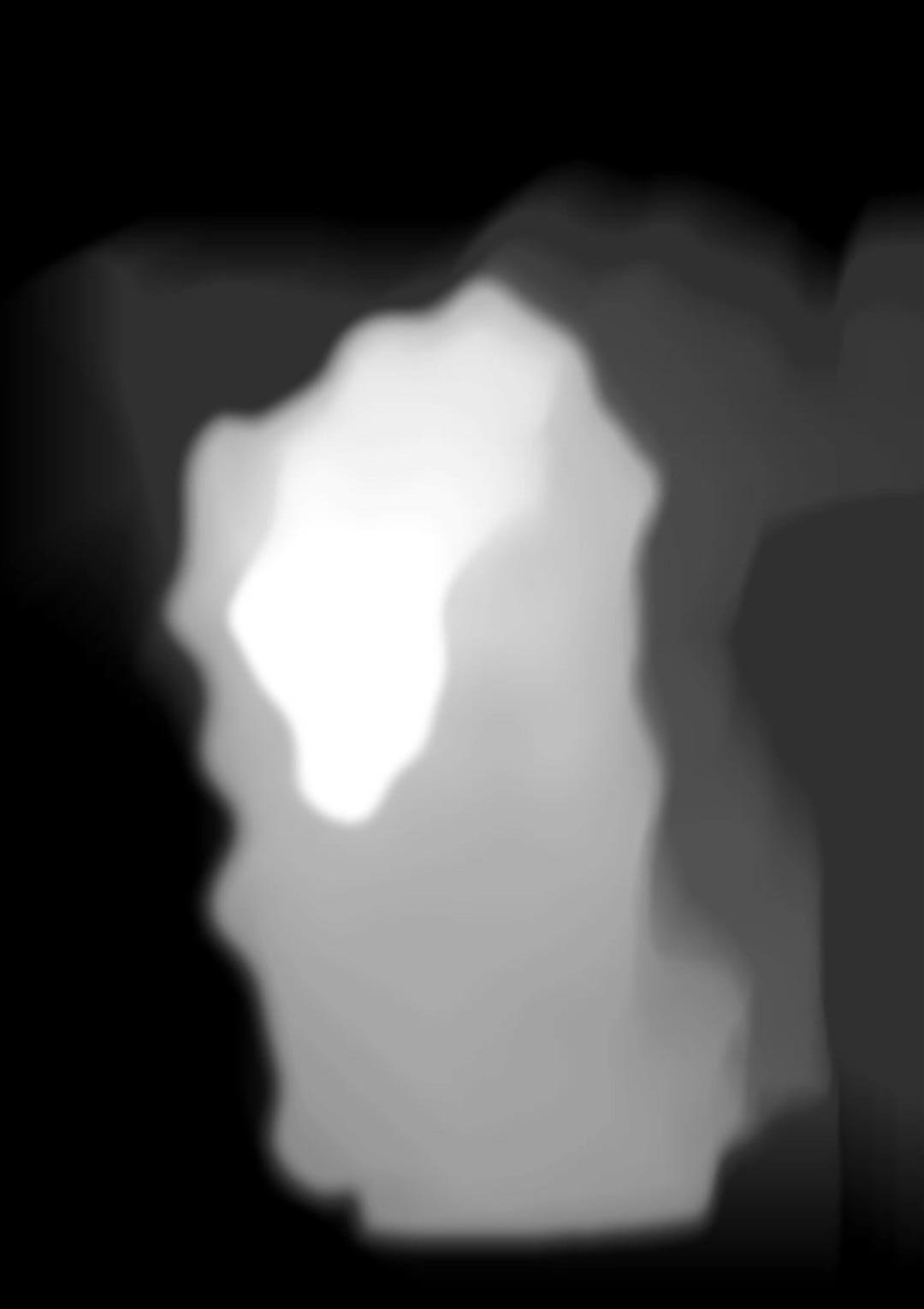 Ocular Envelopes, MArch Y5, Wojciech Karnowka
Ocular Envelopes, MArch Y5, Wojciech Karnowka











































 Visiongrammetry Development Process
World Camera View
Visiongrammetry Development Process
Eye Camera View
Perceptual Void Model, Perspective
Visiongrammetry Development Process
World Camera View
Visiongrammetry Development Process
Eye Camera View
Perceptual Void Model, Perspective


































 Section of the Lyttleton Theatre With Seats Coloured Depending on Distance From the Stage and the Performer. [Algorithmic Analysis: W.Karnowka, Visualisation: R.Frost]
Novello Theatre
Visualisation: R.Frost]
Section of the Lyttleton Theatre With Seats Coloured Depending on Distance From the Stage and the Performer. [Algorithmic Analysis: W.Karnowka, Visualisation: R.Frost]
Novello Theatre
Visualisation: R.Frost]






 Urban Analysis of Amsterdam City: Land Value, Housing Association Properties, Development Plan
Cambridge Biomedical Campus Cambridge Science Park Network
Cambridge Market Ward Network
Cambridge Station Network Chesterford Research Park Network
Urban Analysis of Amsterdam City: Land Value, Housing Association Properties, Development Plan
Cambridge Biomedical Campus Cambridge Science Park Network
Cambridge Market Ward Network
Cambridge Station Network Chesterford Research Park Network




































































 Ocular Envelopes, MArch Y5, Wojciech Karnowka
Ocular Envelopes, MArch Y5, Wojciech Karnowka


